The 12 best cross-training shoes, tested and picked by our expert
I tested the best cross-training shoes from Nike, Reebok, R.A.D, TYR, ON and more—these are my top picks for all kinds of training

Harry Bullmore
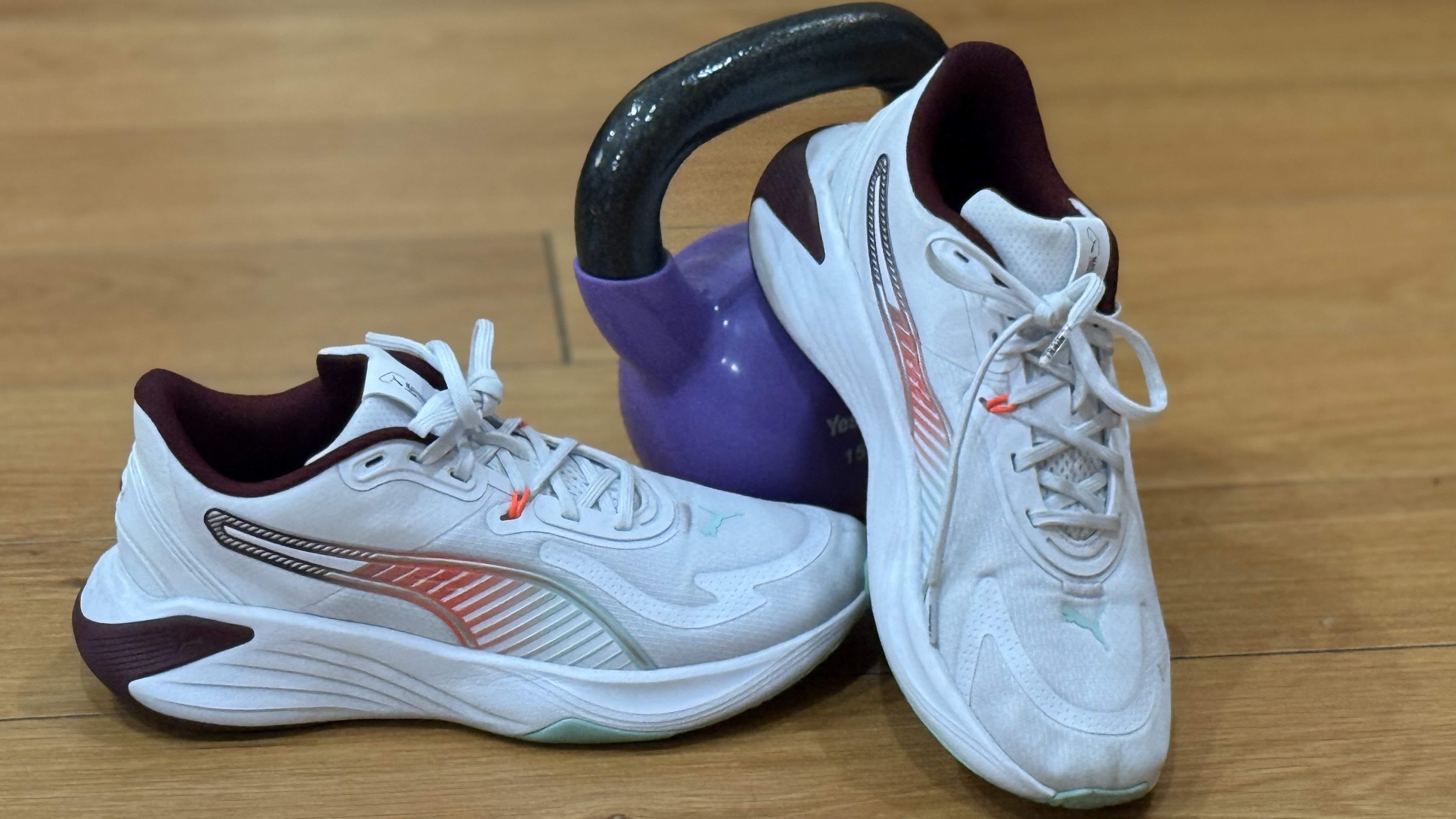
Cross-training shoes are the ideal gym companions.
Designed to suit all kinds of exercise, from short treadmill sprints to heavy lifting sessions, they’re great all-rounders that support you during your favorite classes.
However, not all cross-training shoes are equal. Some are better for running, others for weight training, while others are suited to fast-paced HIIT sessions.
I’m a fitness fanatic and NASM-qualified trainer who loves gym shoes and has spent years testing them.
Below, you’ll find my top recommendations.

Jennifer Rizzuto is a certified personal trainer and corrective exercise specialist who runs, lifts, and enjoys nearly every athletic pursuit there is. She knows first hand how your shoes can affect your performance, and understands design qualities that make certain trainers appropriate for certain activities.
The quick list
Here are my 12 favorite cross-training shoes, with picks for all training types. Here, you’ll find household brands, as well as some lesser-known names that could help you step up your exercise game.
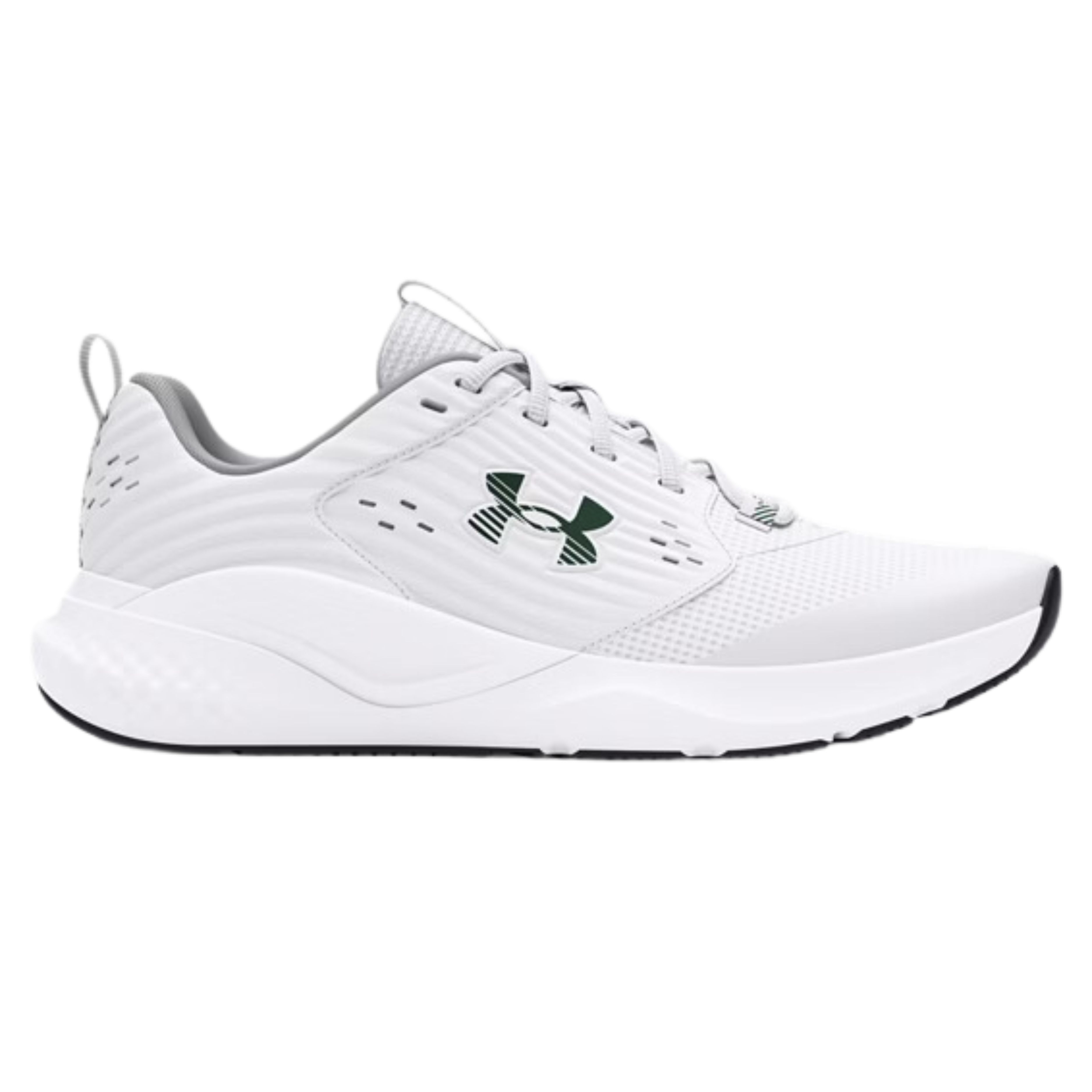
The Under Armour Commit 4 is a fantastic shoe for casual exercisers and serious athletes alike. With just enough cushioning and built-in support, it feels comfortable and stable for a wide range of activities.
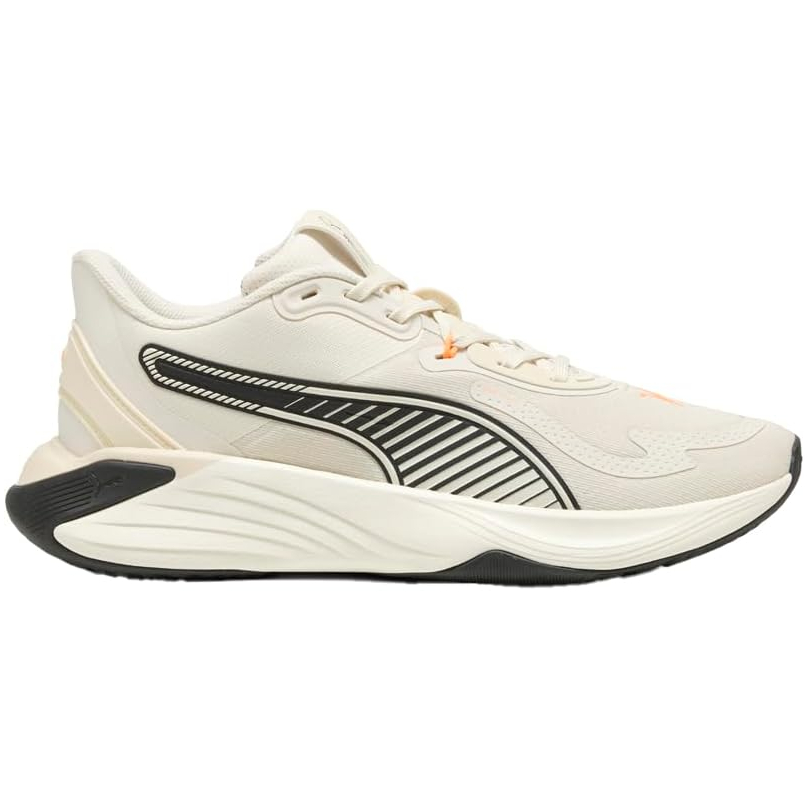
The Puma PWR Hybrid is a solid cross trainer that feels durable, comfortable, supportive—and best of all—easy on your wallet.
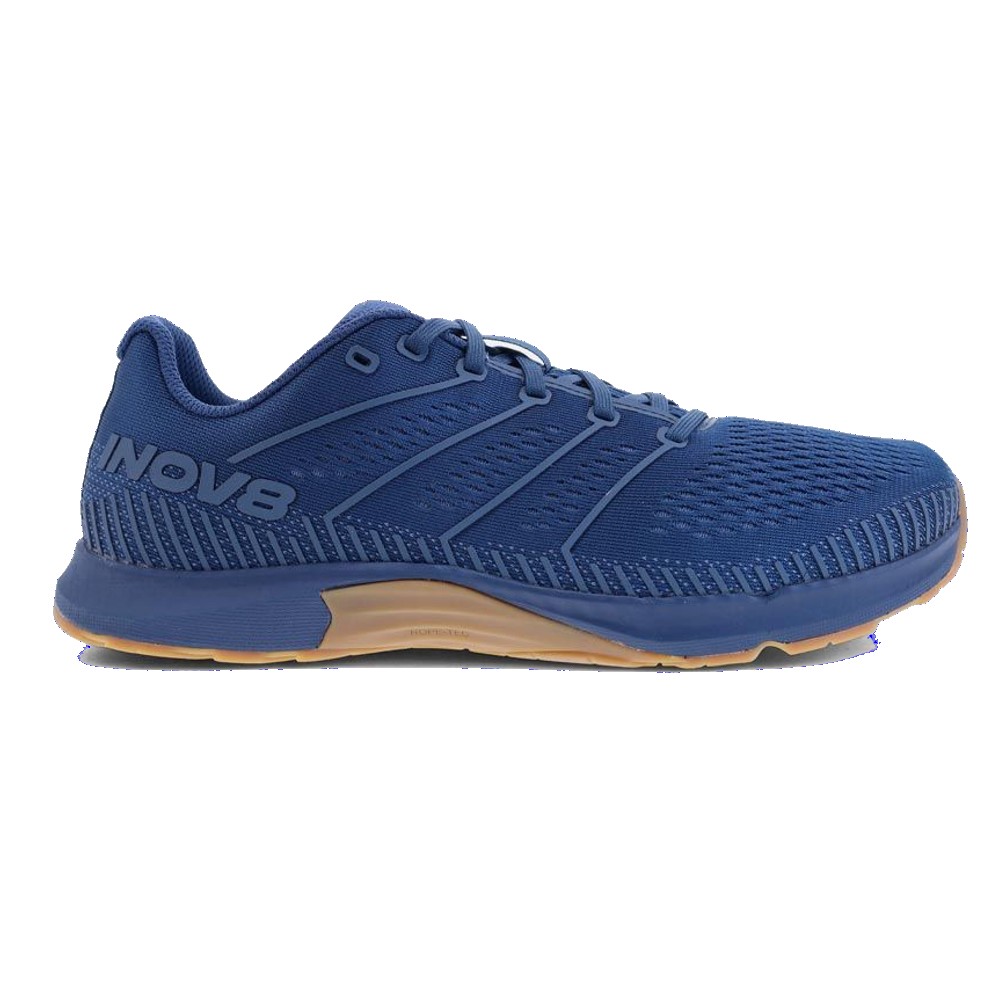
This is the best cross-training shoe you've never heard of. The midsole is springy and energetic for running distances of up to 10km, yet firm enough to support deadlifts of more than 400lb without issue. It's incredibly lightweight, and Inov8's new anatomical shoe shape offers an excellent fit too.

The Swiss brand has designed a running shoe that also works for gym sessions and home workouts. In testing, On’s CloudTec cushioning and the lightweight (240g) design made it great for pounding sidewalks and tracks, along with high-impact workouts, too.

The R.A.D One provides a blend of comfort, performance and style that’s not often seen in a cross-training shoe. It cradled my foot with its soft-yet-supportive upper from the word go and the Swell Foam midsole has an ideal blend of cushioning and responsiveness for dynamic workouts.
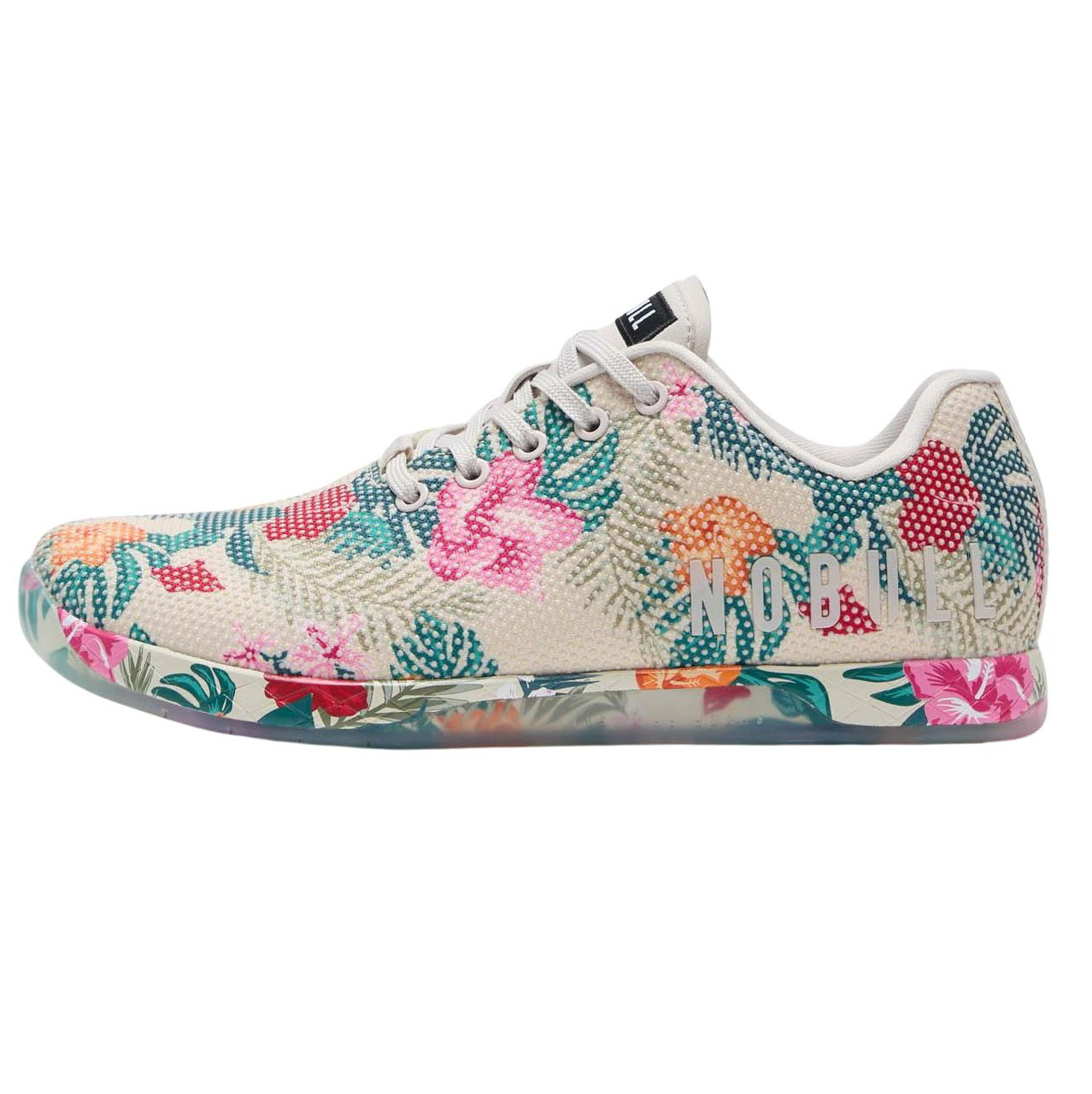
Thanks to a hard insole and minimal heel-to-toe drop, the NOBULL Outwork keeps your feet stable and supported during any athletic pursuit. However, distance runners and walkers may find them to be too heavy and stiff.
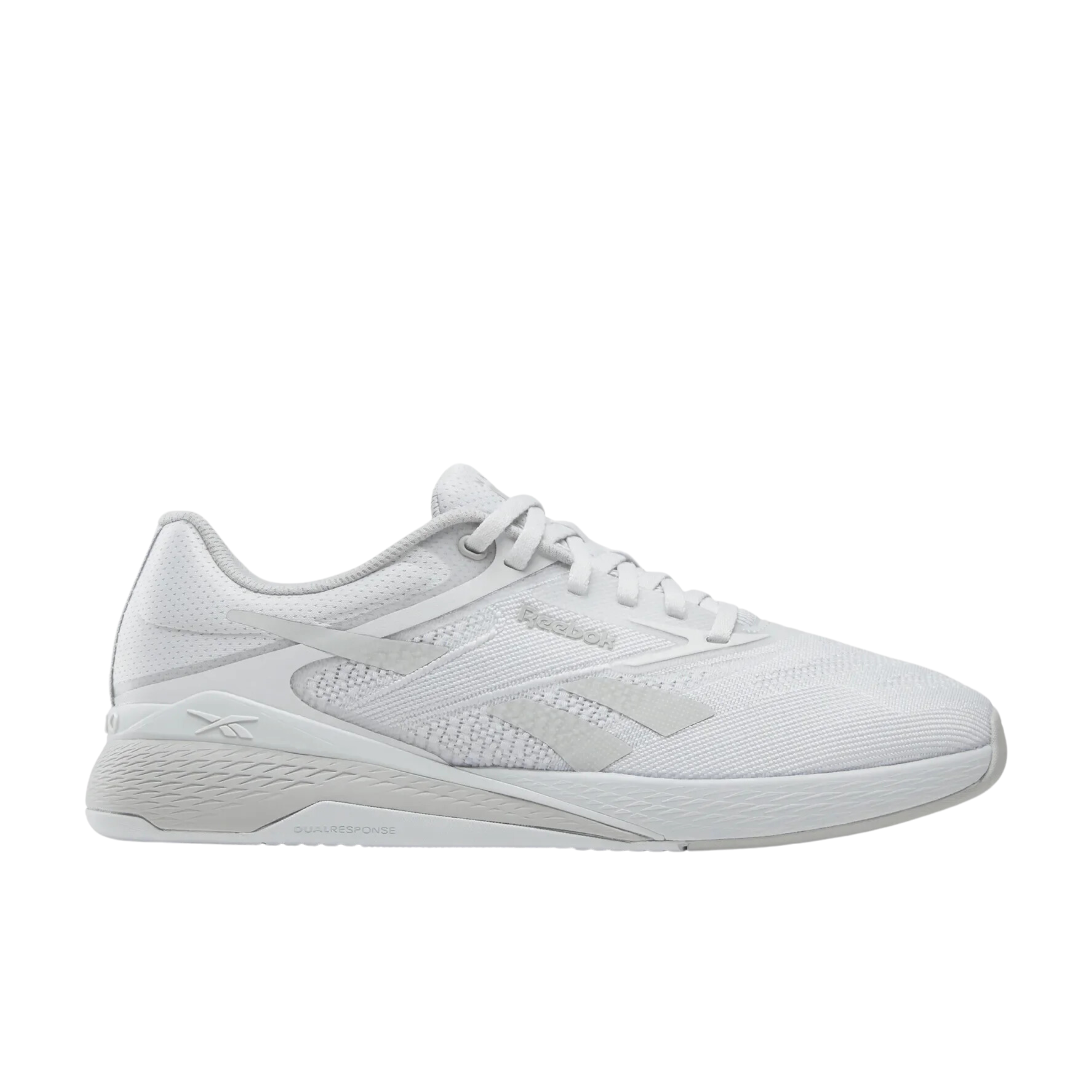
The latest iteration of Reebok’s popular Nano series is sure to please fitness enthusiasts, particularly if you love to lift. However, if you have narrow feet, the Nano X5 may feel too wide.
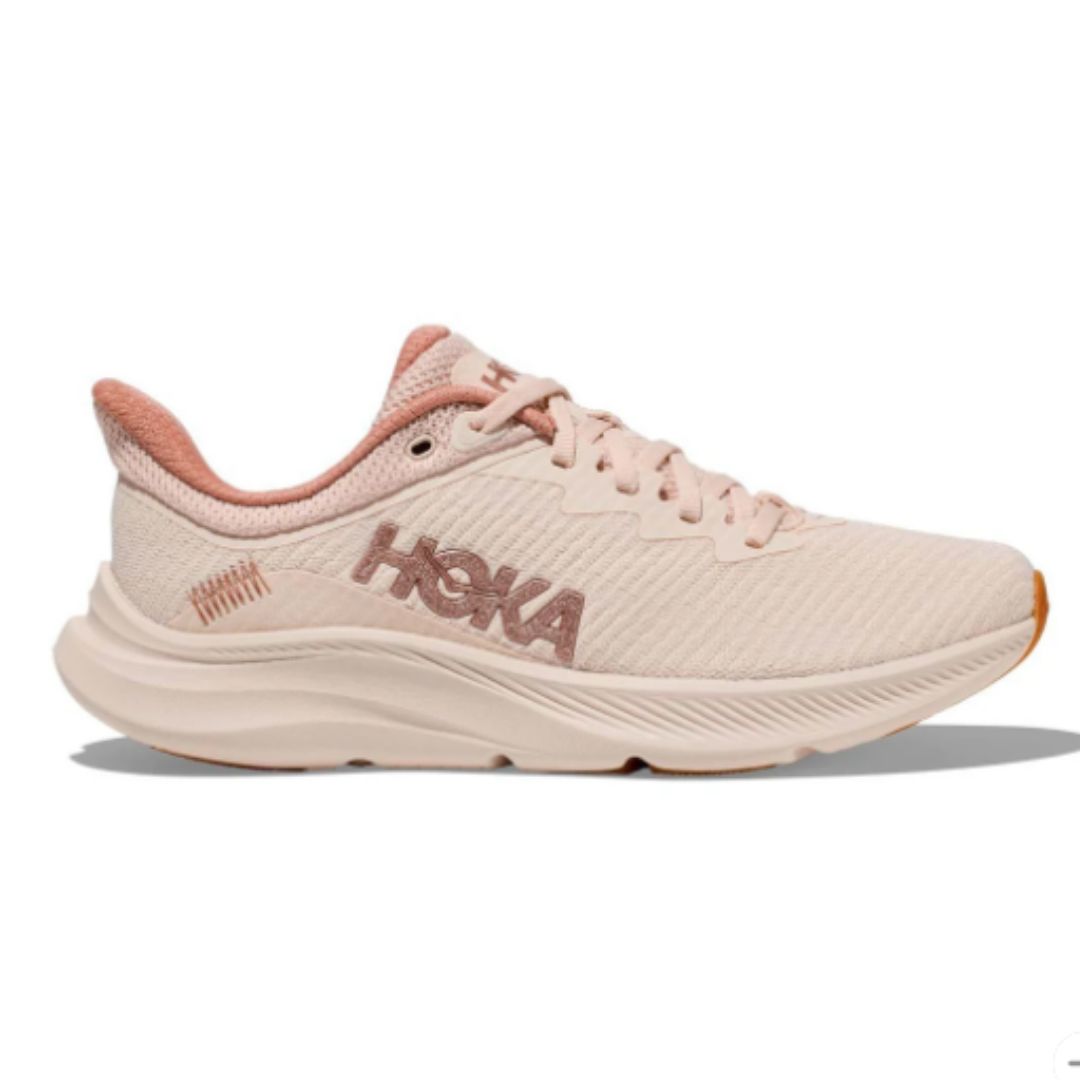
The Hoka Solimar may be your next go-to sneaker for those with a neutral stride and versatile training schedule. It transitions well from pavement to gym, offering lightweight comfort and support but you’ll still need a different pair for heavy weightlifting or long runs if your feet overpronate.
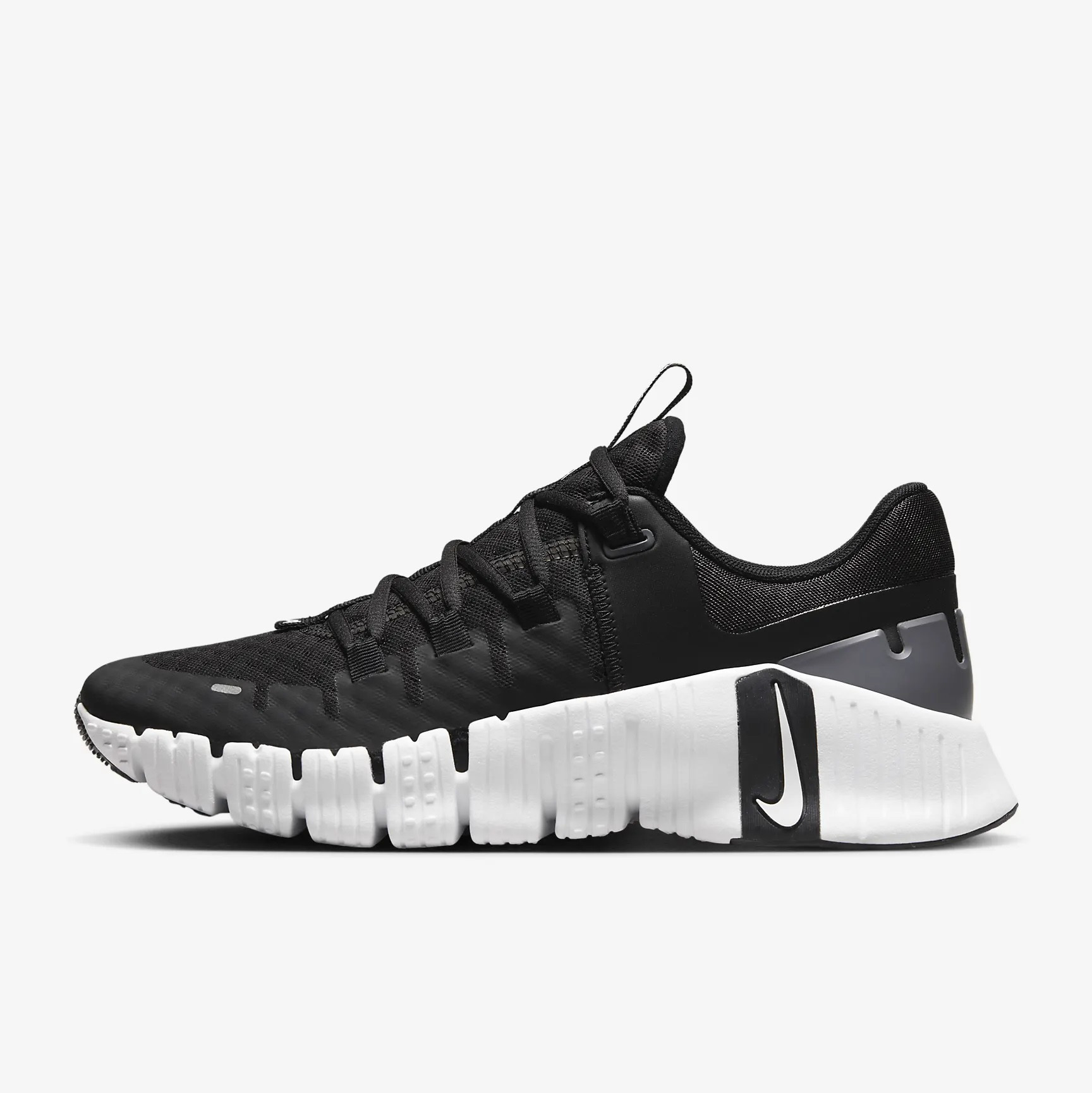
The Nike Free Metcon 5 is a brilliant gym shoe, blending comfort, cushioning, stability and style. I think it looks good in and out of the gym. The wide heel feels sturdy while squatting, and the lively, flexible midsole made sure I had a spring in my step during energetic exercise sessions.
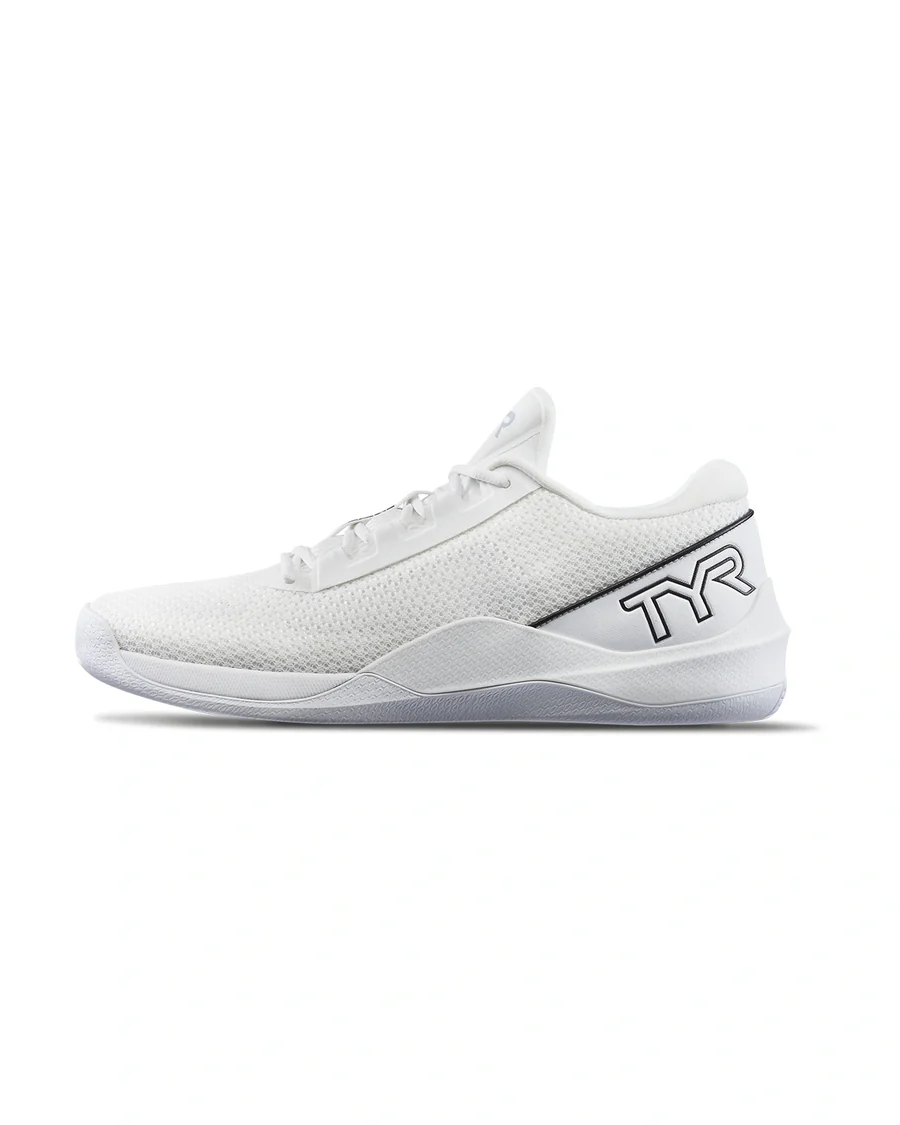
The TYR CXT-2 is one of the most stable cross-training shoes I’ve tested. It delivers good foot-to-ground connection without going full barefoot. However, despite being a ‘wide-fit’ shoe I still found it too narrow.
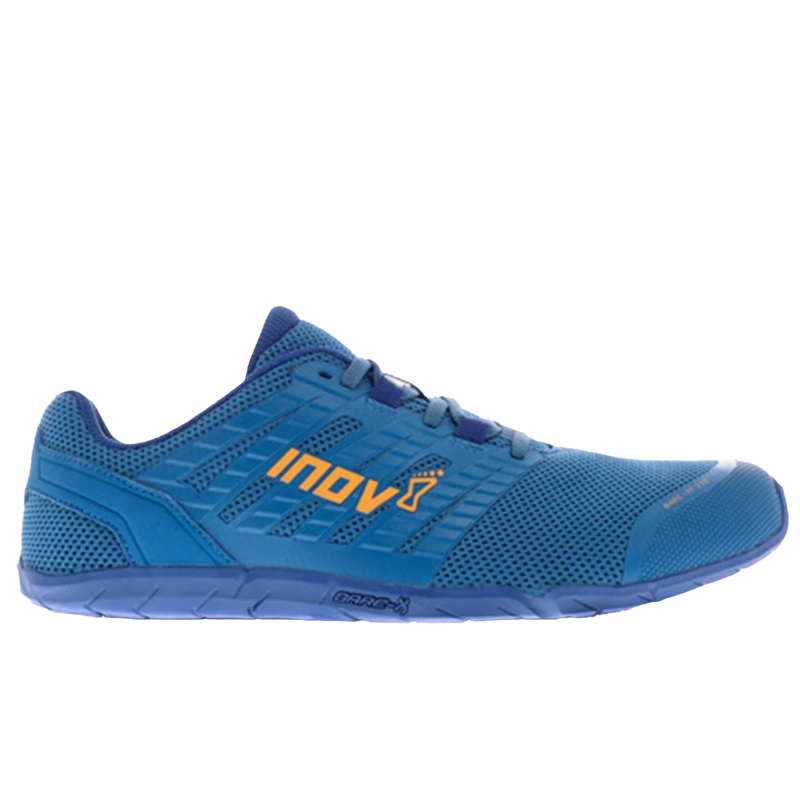
Barefoot shoes can take adjusting to, though I found the Bare-XF easy to get along with thanks to its ergonomic fit and sock-like comfort. This shoe provides great grip through an ultra-thin rubber outsole, but still offers flexibility to allow the feet to move as nature intended.
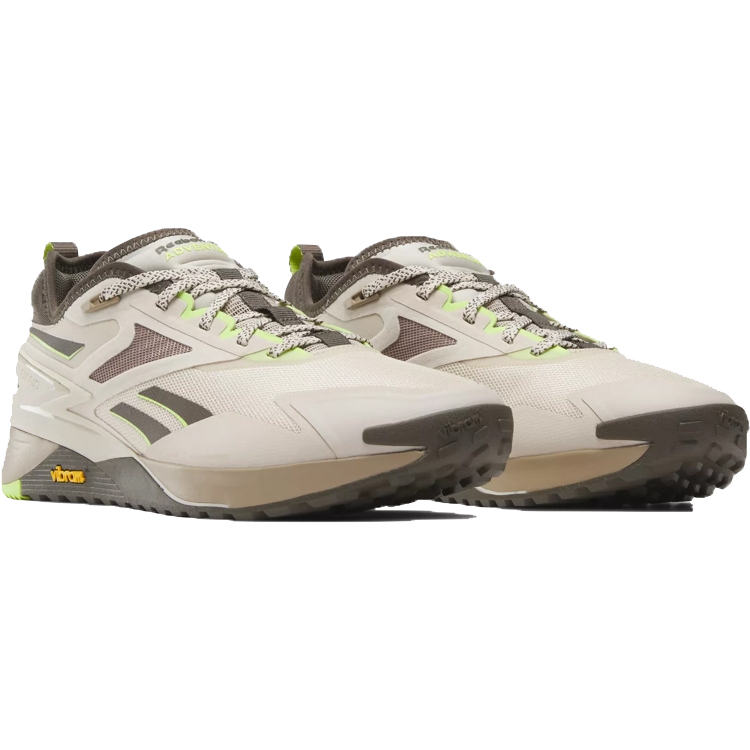
If you want a true do-it-all sneaker, this is probably the closest you’re going to get. It has Reebok’s lift-and-run chassis to see you through gym workouts and short runs alike, as well as a grippy Vibram outsole and water-resistant upper for wet weather walks.
The best cross training shoes you can buy right now
Best overall
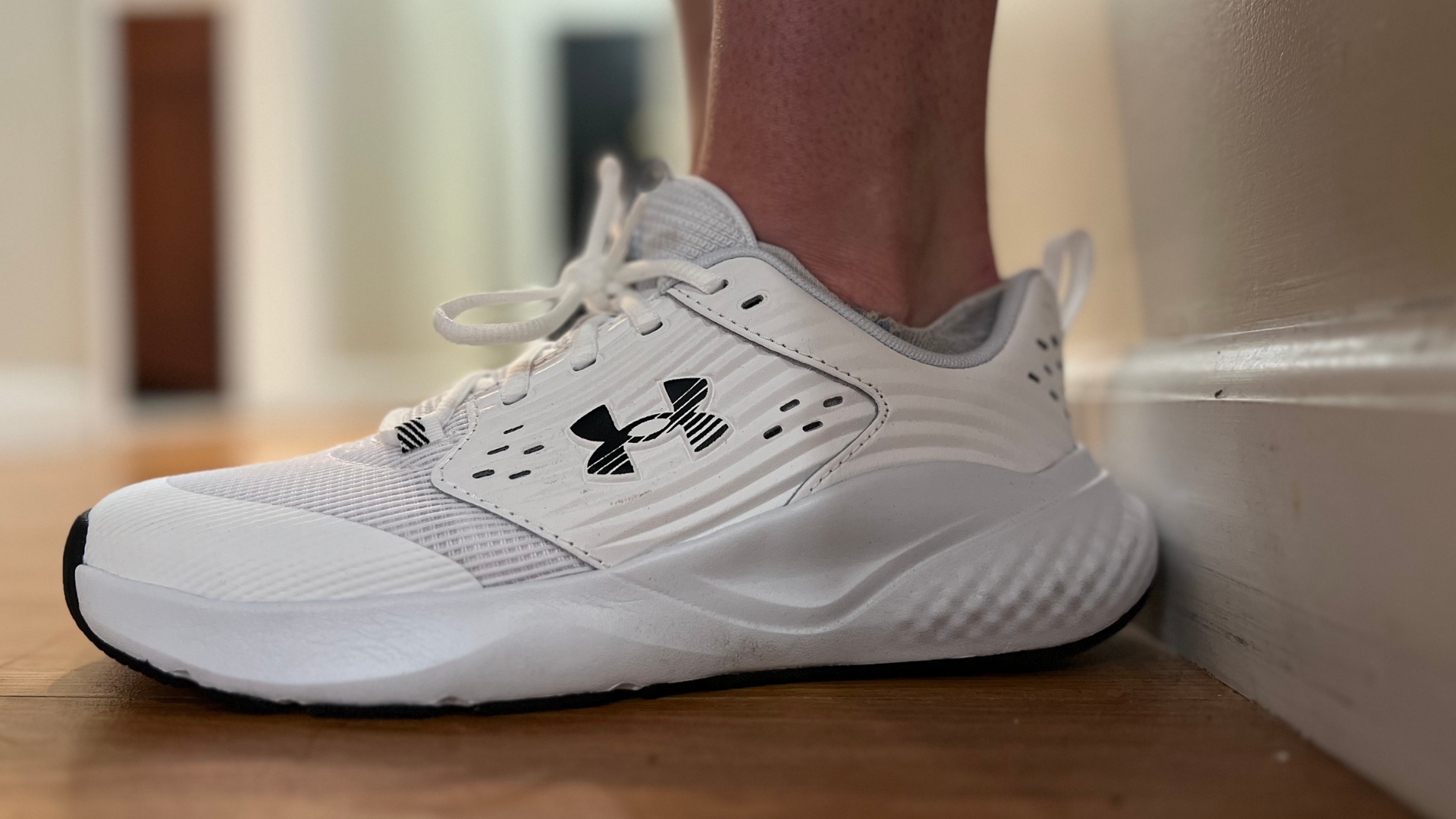
1. Under Armour Commit 4
Our expert review:
Specifications
Reasons to buy
Reasons to avoid
Buy it if
✅ You want a versatile sneaker for a variety of activities.
✅ You enjoy a cushioned yet supported feel for comfort.
✅ You’re seeking a quality training shoe at an affordable price.
Don't buy it if
❌ You’re a powerlifter or heavy weightlifter; consider a lifting or minimalist shoe.
❌ You have very flat feet. The Commit 4 may not provide enough support for long-distance training.
❌ You prefer bright, colorful styles; the color choices are limited.
Whether you’re picking your first pair of cross-training sneakers or adding to your collection, the Under Armour Commit 4 is a well-constructed, versatile choice for nearly any activity.
The Commit 4 has an optimal level of outsole, midsole and insole support and cushioning— there’s just enough support to feel pillowy without sacrificing your foot and ankle stability. Initially, I was skeptical about how it would hold up during a resistance training circuit, given its thick rubber outsole. However, it performed impressively well, providing a strong, grounded feel during exercises like goblet squats and lateral lunges.
During high-impact activities like running and HIIT, the Commit 4 really shined. I breezed through a 5K with happy feet that felt protected with every stride. Its flexed grooves on the outsole allowed for smooth lateral movements, making movements like side shuffles and burpees comfortable and stable. Despite its slightly bulky appearance, it’s surprisingly lightweight, thanks to its breathable upper mesh.
One of the best features of the Commit 4 is its price. Wearing these felt comparable to high-end models like the Brooks Adrenaline or Asics Gel Kayano, but at nearly half the cost.
There are only a few downsides to the Commit 4. Like most cross-training sneakers, it has more cushioning than is ideal for weightlifting, making it less stable for anchoring during exercises with a heavy barbell. A barefoot or minimalist shoe would be better suited for that.
While the Commit 4 offers great support, it may not provide enough motion control for overpronators or those with flat feet. Lastly, if you prefer vibrant, colorful shoes, you might find the options lacking—men’s choices are mainly neutral and women only have a single color option (white).
Best budget
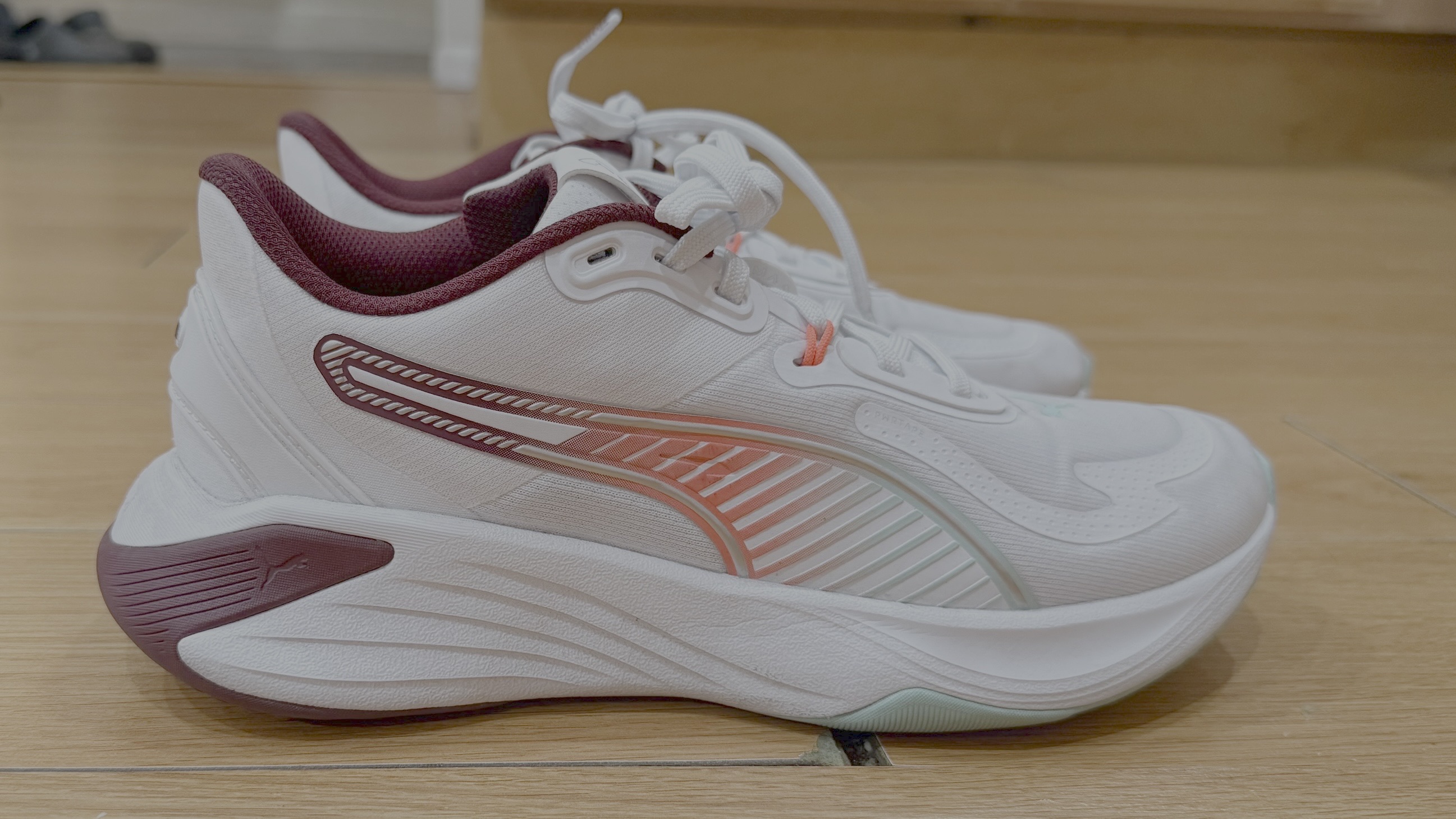
2. Puma PWR Hybrid
Our expert review:
Specifications
Reasons to buy
Reasons to avoid
Buy it if
✅ You want a comfortable, supportive pair of sneakers without spending a fortune.
✅ You have a neutral stride and want a short or mid-distance running shoe.
✅ You’re a HIIT lover and want to feel cushioned and stable for high-impact exercise.
Don't buy it if
❌ Your cross training involves lifting heavy weights—look for a shoe with less cushioning and a lower heel-to-toe drop.
❌ You do a lot of CrossFit or obstacle course training and need more specialized traction.
❌ You run long distances and over or under pronate—the PWR Hybrid suits a neutral stride best.
“You get what you pay for” often rings true when it comes to cross-training shoes—usually, the cheaper you go, the more you’ll sacrifice quality.
Thankfully, that’s not the case with the Puma PWR Hybrid. At $80, it's a budget-friendly option that performed well in most activities I tested them on.
The shoe's cushioning, combined with reinforced ankle and heel supports, make each stride feel supportive yet pillowy, especially during high-impact exercise like running.
Though it isn't a high-top design, the shoe fit a little higher than most sneakers I’ve tried, which reinforces that feeling of security and support.
I typically only run in sneakers designed for overpronators, yet the Puma PWR Hybrids—designed for a more neutral stride—felt comfortable on a 5K run.
I wouldn’t wear it for longer distances—preferring a motion-control shoe to support my overpronation—but for short runs or walks, the Hybrids felt great. Even better, they didn’t scuff up or show signs of wear after testing.
While the Hybrid’s generous cushioning felt reassuring for high-impact activities, it was somewhat of a hindrance for weight training.
During sets of dumbbell squats and lunges, the cushioning, thick rubber outsoles and 8mm heel-to-toe drop affected my balance and sense of contact with the floor—elements that are crucial for heavy lifting.
The outsoles also boast Puma’s “PUMAGRIP” performance rubber that’s designed for traction. I found the traction adequate enough for my usual workouts, but I wouldn’t rely on them for an obstacle course or CrossFit workout.
If you’re not into heavy lifting and mainly do light resistance training or cardio, you’d be hard pressed to find a better quality shoe at this price.
It's comparable to the Under Armour Commit 4 (my overall top pick) in its performance.
It's relatively cheap, at $80, but as it's a newly released shoe I haven't seen it drop below this recommended retail price yet.
Best all-rounder
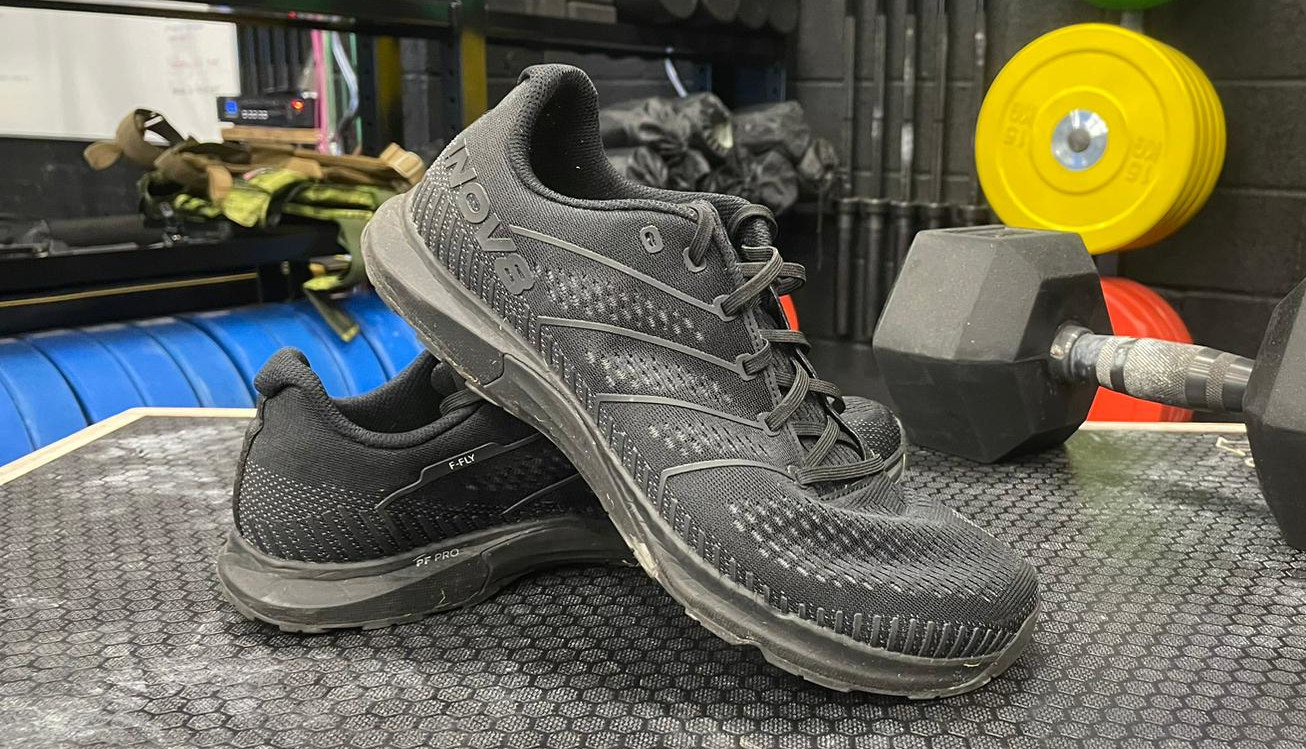
3. Inov8 F-Fly
Our expert review:
Specifications
Reasons to buy
Reasons to avoid
Buy it if
✅ You want a cross-training shoe that really can do it all, including mid-length runs and lifting weights.
✅ You want one pair of sneakers to see you through all gym-based activities.
✅ You don't get on with traditional shoe shapes.
Don't buy it if
❌ You're a CrossFit fan who is serious about their Olympic weightlifting exercises.
❌ Style is a big factor in your sneaker choices.
I went on vacation recently and the Inov8 F-Fly was the first thing I packed. I love squeezing in some fun, varied workouts while I'm on holiday and this "hybrid" shoe promises to handle anything you can throw at it, so I wanted to see how it fared.
I always like to explore a new place with a steady run, so I slipped on the F-Fly and set off for a nine mile plod.
Most cross-training shoes aren't designed to handle more than a couple of miles, but that's not the case with the F-Fly. The Inov8's springy POWERFLOW PRO midsole kept my feet cushioned and comfortable, and it was only at the seven-mile mark that I started to feel like I might have enjoyed a bit more cushioning.
The shoe has since seen me through plenty of fast interval sessions without a hitch, so I happily recommend it for distances of up to six miles, or 10km.
A couple of days later, I scoped out a nearby gym for some lifting. Usually, a running shoe struggles in the weights room, with the spongy midsole providing shaky foundations for heavy leg exercises and sapping your power, but again, the Inov8 F-Fly bucked the trend.
I worked up to a heavy deadlift of more than 400lb with minimal midsole compression and I felt stable during single-leg exercises like Bulgarian split squats.
This was helped by Inov8's updated shape, which the brand has also used on its Bare-XF. The heel locked my foot in place to prevent rubbing or movement, which was an issue I'd encountered with the brand's F-Lite G 300, and the midfoot offered a snug fit without any uncomfortable pinching. The shoe then widens at the toe box, mirroring the foot’s natural shape. Not only was this incredibly comfortable, but it also allowed me to spread my toes for balance while lifting weights.
Admittedly, the Inov8 F-Fly didn't quite match the stability of dedicated CrossFit shoes like the Reebok Nano X4 and TYR CXT-1, so CrossFitters who regularly train perform Olympic lifts, you might want to consider one of these two, but for general strength training the F-Fly impresses.
The final test of the trip came in the shape of a HIIT-style circuit, involving explosive exercises like sprints, burpees and frontal plane (side-to-side) movements like skaters. Again, I was impressed.
The Inov8 F-Fly's mesh upper is featherlight and breathable, while the midsole balances an energetic ride with a minimalist feel. The combination of these three features means it was easy to forget I was wearing anything on my feet at all, which is the mark of a good shoe. There was plenty of support for multidirectional movements too.
The only downside is the F-Fly's looks. Of course, this is subjective, but I didn’t think it had the style of a high-end training sneaker and I wouldn’t reach for it for a wander around town.
But the fact that this is my only drawback speaks volumes. Inov8 set out to design a shoe that could do it all, and I think the brand can be satisfied with a job very well done. That’s why, if you want to buy one shoe to see you through a varied training schedule, I think the F-Fly should be your first port of call.
Best for running
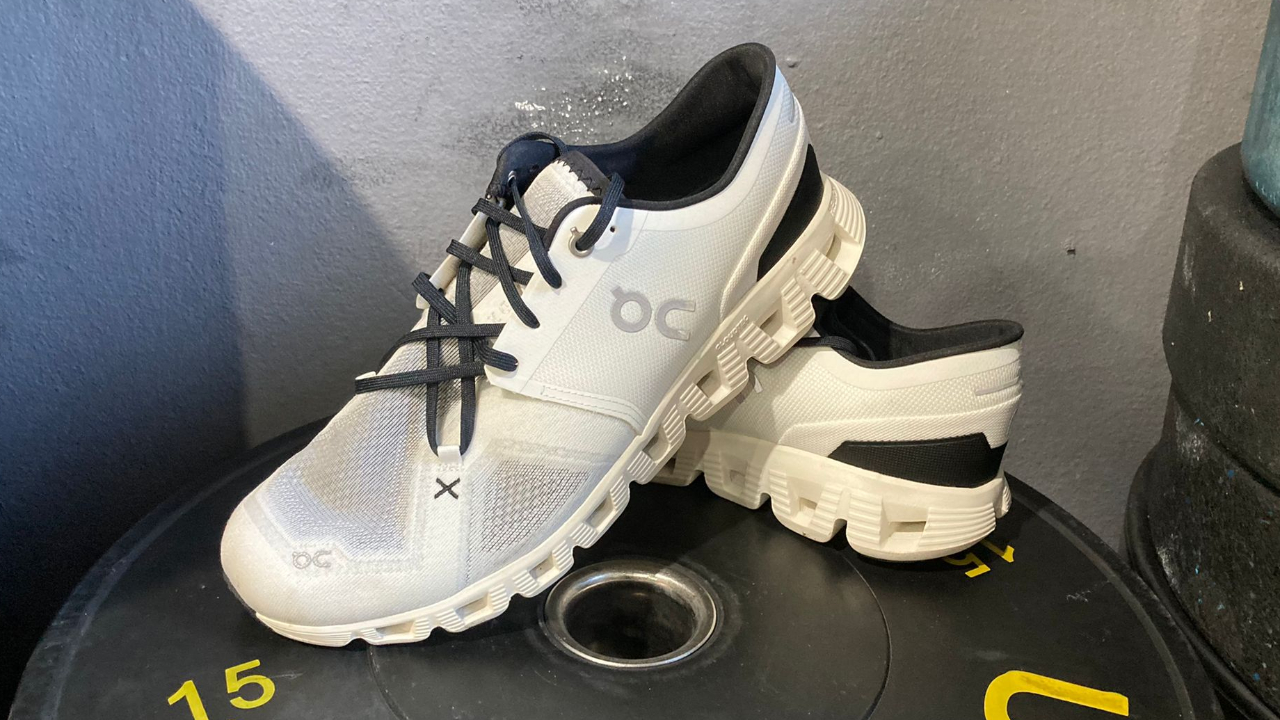
4. On Cloud X 3
Our expert review:
Specifications
Reasons to buy
Reasons to avoid
Buy it if
✅ You enjoy staying in shape through a balance of running and other forms of exercise, like HIIT and lifting weights.
✅ You go to gym classes like circuits, which challenge you to work through a range of different exercises.
Don't buy it if
❌ Your focus is strength-training
❌ You want a shoe to wear for CrossFit classes, as the On Cloud X 3 doesn’t have the durability.
You shouldn’t squat in running shoes. That’s one of the first things I was told when I started sniffing around for the best set of gym sneakers more than a decade ago. Why not? Because the thick layer of foam in the midsole compresses under weight, providing an unstable base, which makes it hard to generate power through the ground.
Yet, the On Cloud X 3 persuaded me to break this rule, and I didn’t regret it. This is a running shoe with a twist. It still has On’s signature honeycomb-shaped CloudTec midsole to provide support for short to mid-length jaunts, but it also features a molded heel cap, wider base and lower level of cushioning than the brand’s other offerings to make it better for HIIT and strength training.
To test, I took the shoe for a 20-minute CrossFit workout combining these two moves—running intervals and air squats. The Cloud X 3 felt fantastic for running. It’s lightweight, springy and responsive, helping me feel fleet-footed as I wracked up the miles. The star lacing, an update from its predecessor, the On Cloud X, provided a snug fit for my narrow feet, too.
I’d keep it for runs of 10km and below due to the lower level of cushioning, but if you don’t often tackle longer runs as part of your training then it’s a great option. It also felt good during squats. The wider base paired with the firm, flat (unlike the Hoka Kawana) sole provided a superb level of stability for a running shoe, which I also benefited from during explosive exercises like skaters in later HIIT-style workouts.
For this reason I’d recommend this shoe to most people looking to follow an active lifestyle, and particularly runners who want to try cross training to fend off injuries while improving their performance. The one type of exerciser that may want to swerve these sneakers is someone who’s focused on strength training.
The On Cloud X 3’s less cushioned midsole is better than pretty much any other running shoe for lifting weights, but it still can’t match the stability of a dedicated training or lifting shoe, like the Nike Metcon 9, Inov8 F Lite G 300 and Reebok Nano X3.
You should be fine squatting and deadlifting weights up to 60kg, but if you lift any heavier than this on a regular basis you’ll want to pick up some more purpose-built footwear.
Best for HIIT
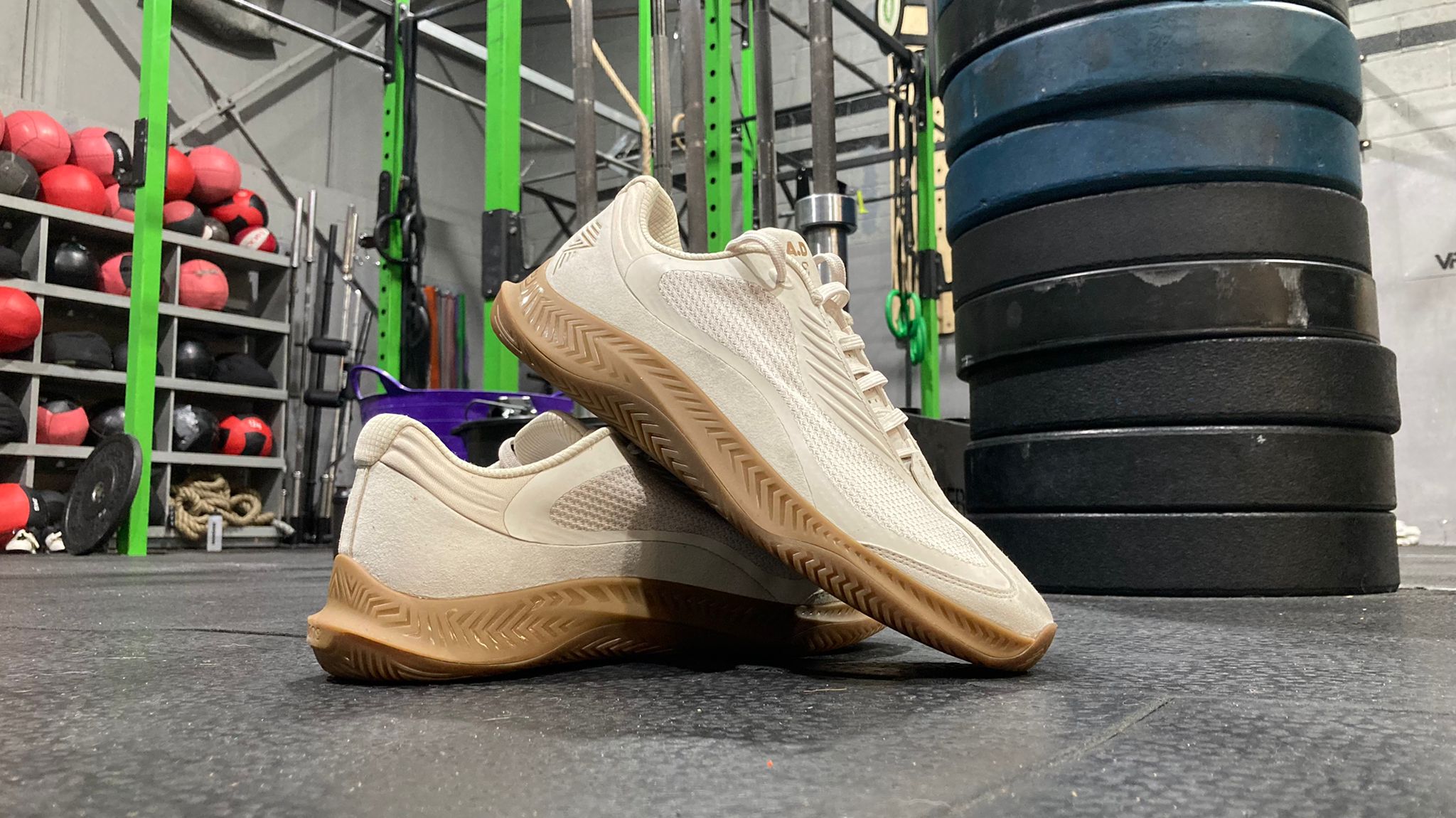
5. R.A.D One
Our expert review:
Specifications
Reasons to buy
Reasons to avoid
Buy it if
✅ Support and comfort are your priorities in a training shoe.
✅ High-energy exercise classes like CrossFit or BodyPump are your go-to.
✅ You want a stylish sneaker you can wear in and out of the gym.
Don't buy it if
❌ Most of your training revolves around lifting heavy weights.
The R.A.D One sticks out like a sore thumb in this list—surrounded by household names like Reebok, Nike and Puma—but, having tested it for a month, few shoes are more deserving of a spot in our round-up. It looks fantastic and improved my outfit whether I was at a squat rack or a restaurant.
I found the R.A.D One comfortable from the moment I slipped it on. There was no break-in period, no pinch points and no rubbing, yet it still locked my heel down for a secure fit. It also hit the sweet spot with its cushioning: there was enough to feel supported during high-impact exercises, but not so much that it felt clunky like a running shoe. This is down to the Swell Foam midsole, which is designed to be light, springy and slim.
The only area that fell below a high standard was stability. The stability cage (the thick layer of rubber wrapping around the bottom of the shoe) provides support for lifting lighter weights and multidirectional movements during circuit-style workouts, but doesnt’ have the same secure feel as the Reebok Nano X4 and Nike Metcon 9 when shifting heavy loads (for me, this is 175lb/80kg and above). This only applied to leg exercises like squats, deadlifts and Olympic weightlifting moves, and the shoe was still more stable than most. However, it didn’t offer quite the same firm foundations as a few of its rivals.
The R.A.D One’s general workout performance (and its looks, and its comfort) make up for this. So, if you’re on the hunt for good-looking footwear to wear at the gym, home workouts, classes, CrossFit, HIIT or any other lively type of exercise, you’d be well-served by this shoe.
Best for lifting
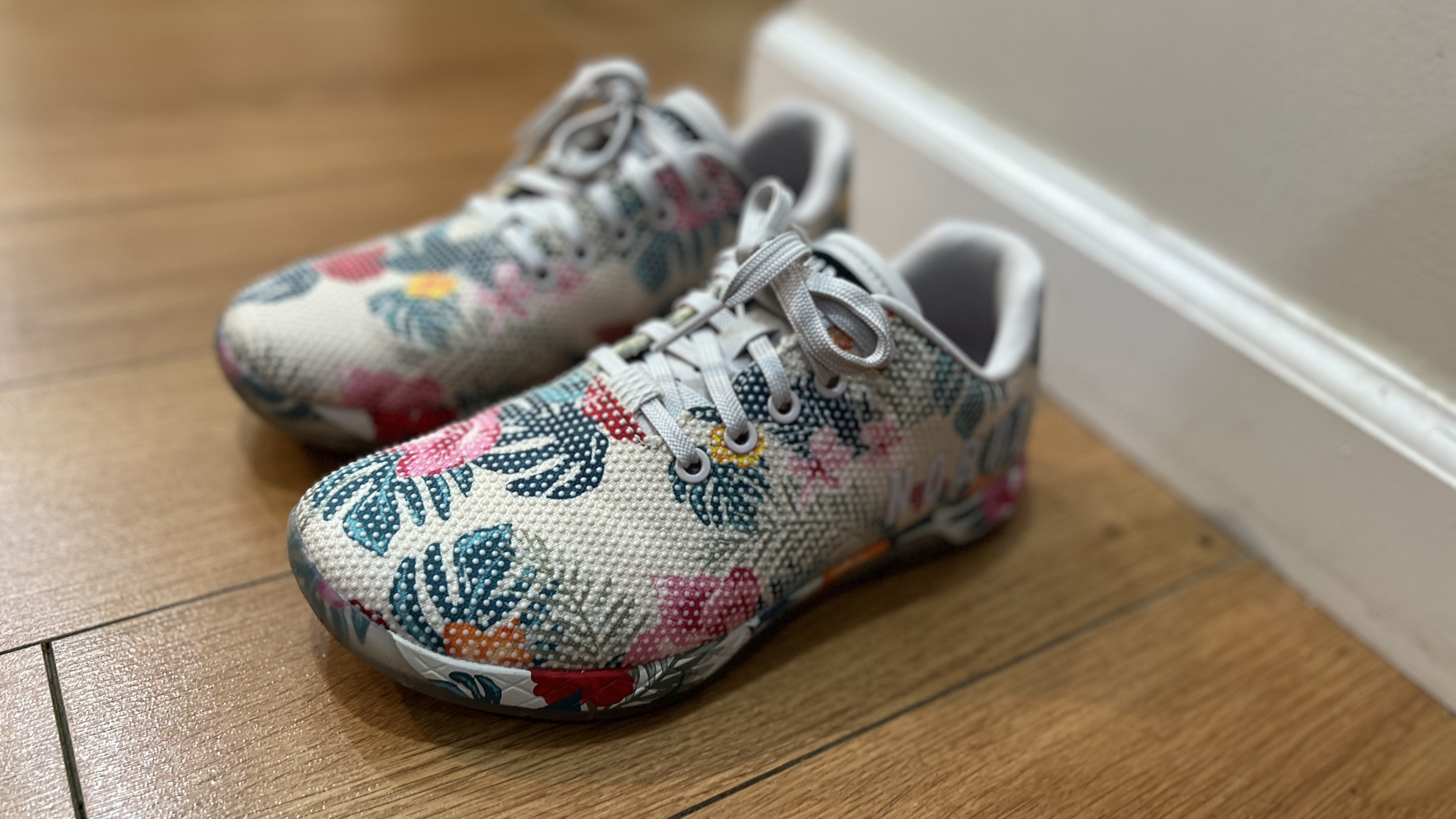
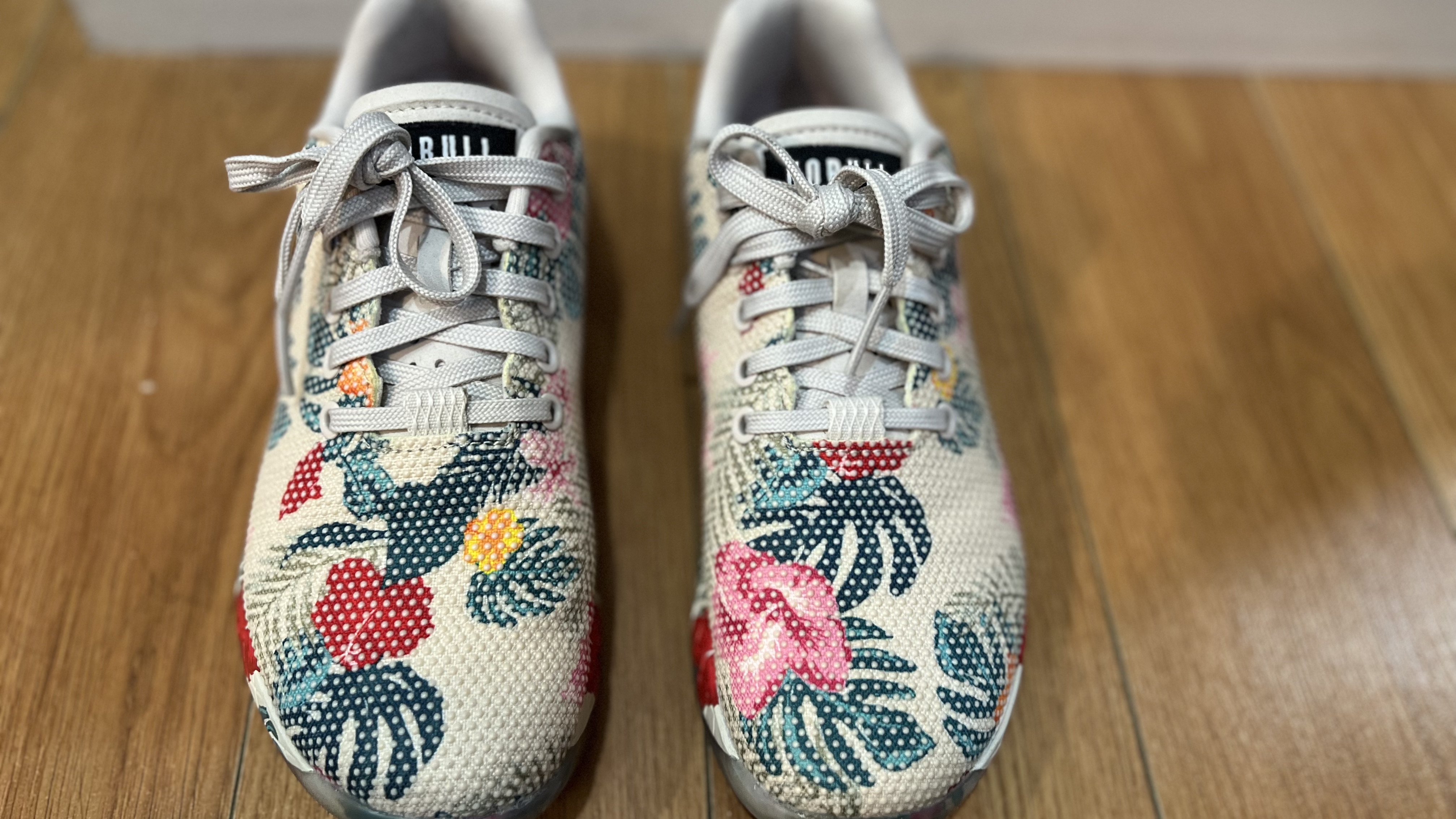
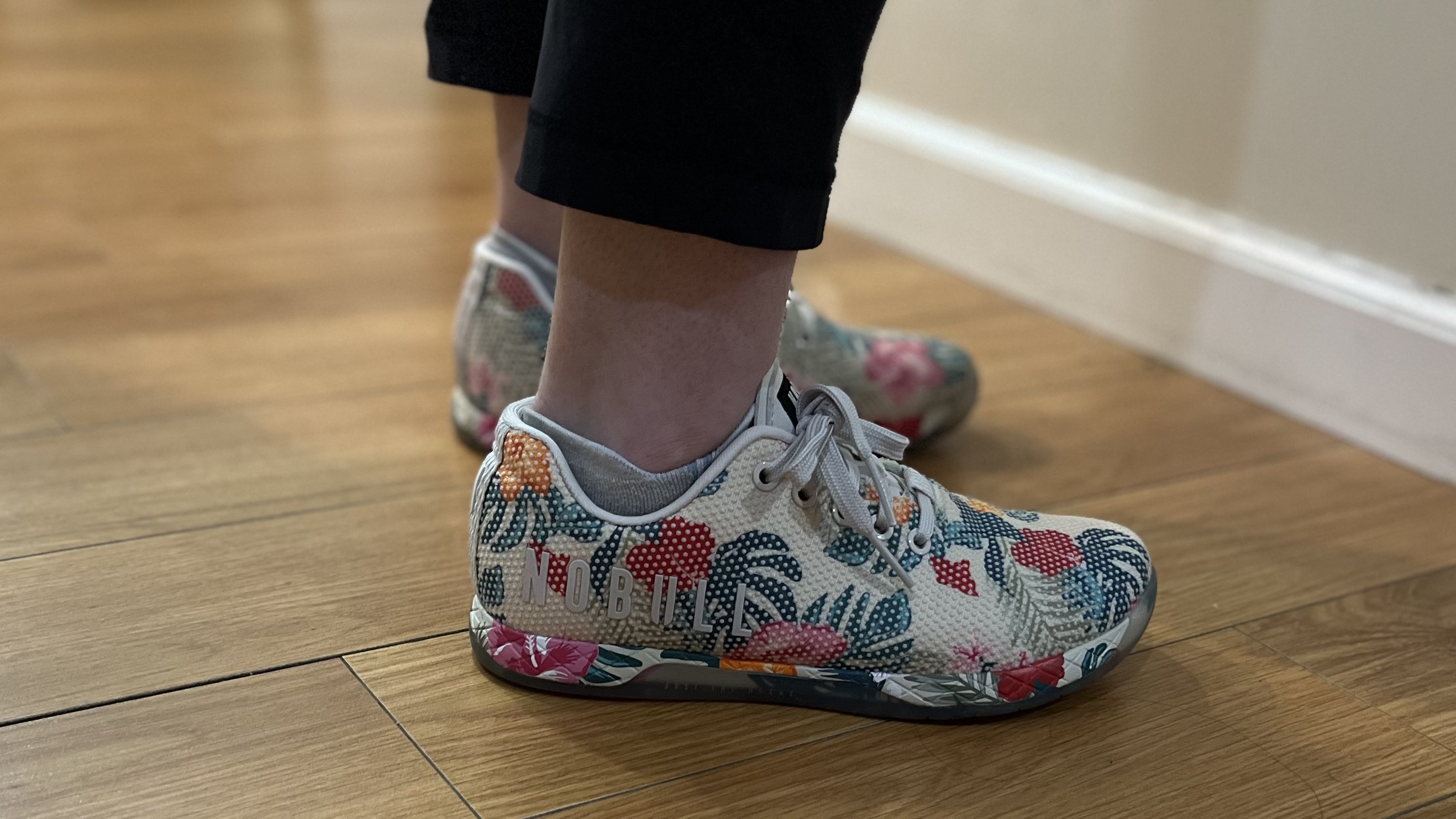
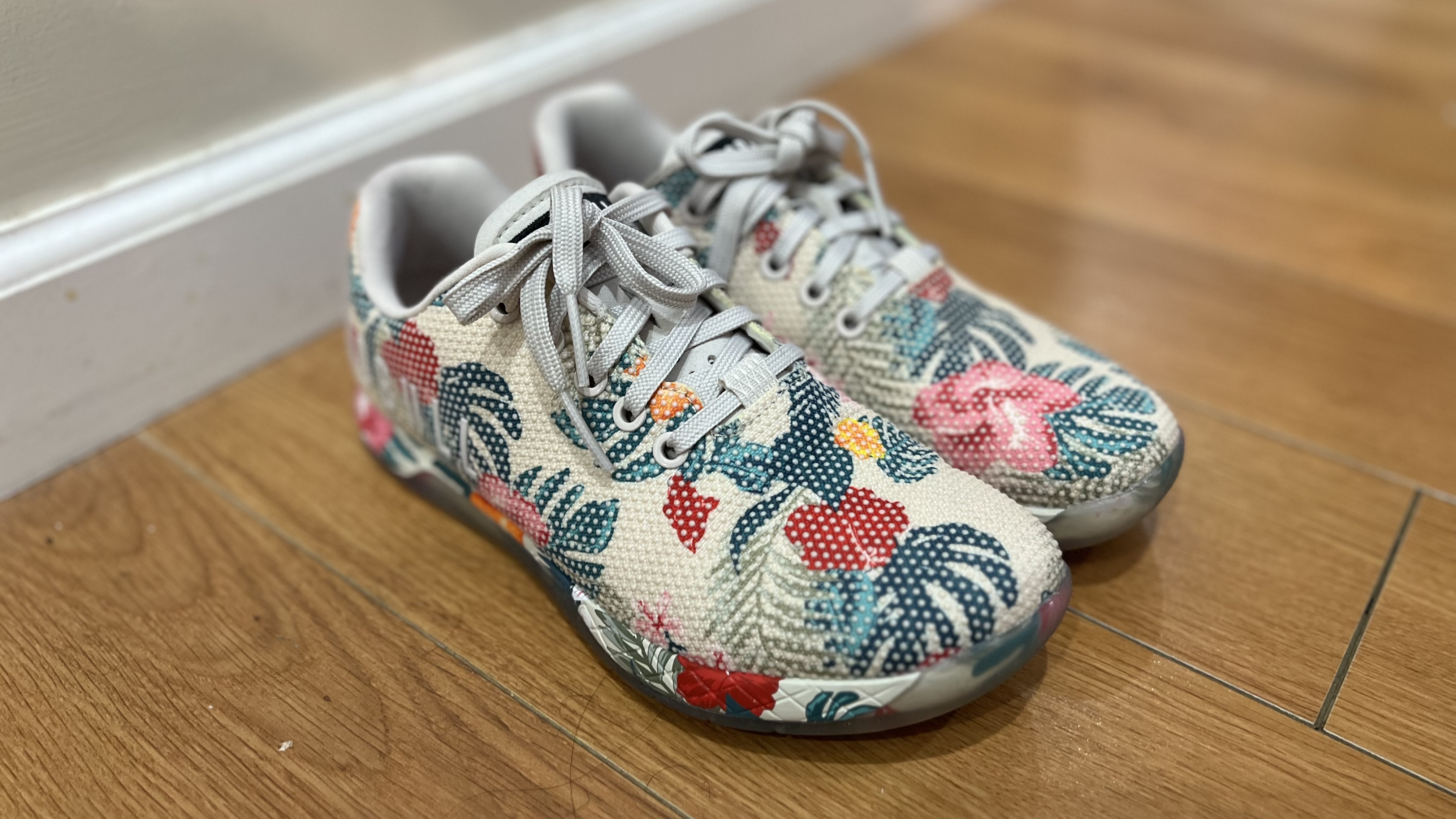
6. NOBULL Outwork
Our expert review:
Specifications
Reasons to buy
Reasons to avoid
Buy it if
✅ You need a versatile sneaker for a variety of activities.
✅ You want a stabilizing and supportive shoe that promotes a natural stride and connection to the ground.
✅ You need something strong and water-repellant.
Don't buy it if
❌ Your workouts consist mainly of long runs or walks.
❌ You need a lightweight sneaker.
❌ You prefer a sneaker with lots of cushioning.
The NOBULL Outwork combines the lower heel-to-toe drop of minimalist shoes and the built-in support of the most popular cross-training sneakers. This makes them a versatile footwear choice for those who enjoy CrossFit, heavy weightlifting, and HIIT classes in equal measure.
I usually wear classic Converse sneakers (or go barefoot) when working with a heavy barbell, since the thick outsoles and excessive cushioning of traditional cross-trainers can affect foot and ankle stability. Thanks to the Outwork’s 4mm drop and super stiff insole, I felt stable and anchored to the floor during every squat and deadlift. When I added in a few dumbbell lunges, I continued to feel supported and strong.
Not only great for the squat rack, the NOBULL Outwork shined during HIIT and circuit training as well. While they did start to feel a little heavy in a round of box jumps and burpees, I was able to change direction quickly without fear of twisting an ankle or losing balance. The Outwork’s outer SuperFabric construction is water-repellent and virtually tear-proof, so they would last you through several seasons of CrossFit classes or even a few obstacle course races.
However, if you’re more inclined to run on the treadmill than pick up a weight, the NOBULL Outwork may not be your best choice. Their hard insoles were excellent when I was squatting and lunging, but they started to make my feet ache halfway through a 5K. The SuperFabric construction also contributed to my aching feet—the Outwork is a durable shoe, but hard to fully break in.
NOBULL suggests purchasing the Outwork a half-size up from your normal shoe size, and this is advice I should have heeded. I tested a pair in my usual US Women’s size 8, and my toes were a bit squished. An 8.5 would have been more comfortable. - Reviewed by Jennifer Rizzuto
Best Reebok shoe
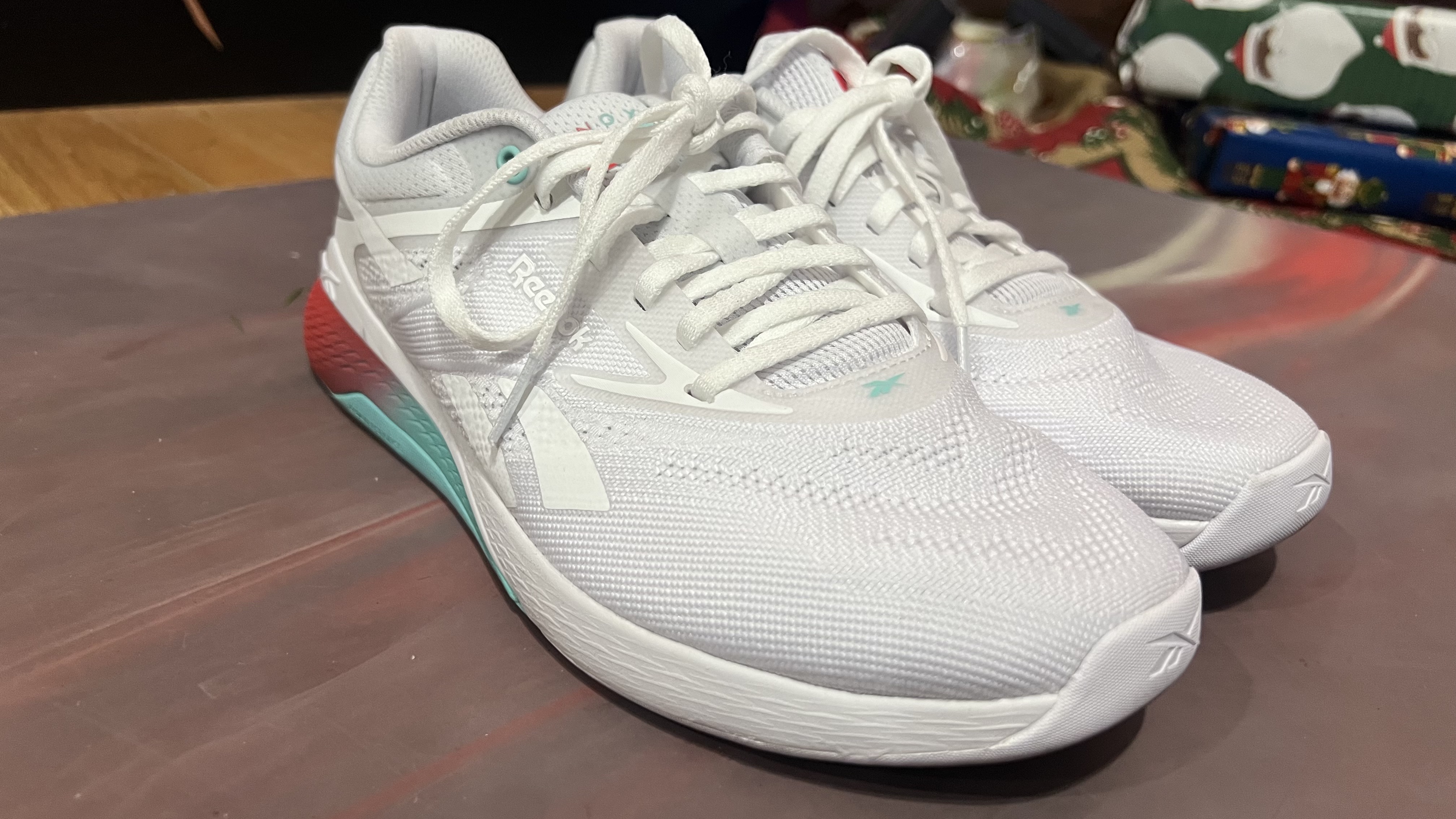
7. Reebok Nano X5
Our expert review:
Specifications
Reasons to buy
Reasons to avoid
Buy it if
✅ You need a durable, supportive and comfortable shoe for CrossFit and heavy lifting.
✅ You like to lift but don’t want to wear barefoot or lifting-specific shoes.
✅ You prefer a wider toe-box for added comfort.
Don't buy it if
❌ You mostly run as the Nano X5 insole lacks cushioning.
❌ You have narrow feet or ankles as the fit may feel too loose.
❌ You’re on a tight budget and need a more affordable option.
Having tested and reviewed previous Nano models, I was particularly impressed with the Nano X5’s comfort and support. The new aptly named Dualresponse midsole enhances ground contact and stability, making it ideal for my heavy squat and deadlift days, and transitioned well to more cardio-based workouts.
Unlike many shoes with a thicker outsole, the Nano X5 didn’t negatively impact my stability or compromise my barbell work. The Nano X5 delivered solid support to my feet and ankles throughout each movement. I felt balanced and cushioned during high-repetition dumbbell lunges and burpees, where the insole—with little toe-spring—provided just enough comfort while maintaining responsiveness. For avid CrossFitters, the X5’s durability and stability will help you tackle WODs as well as Olympic lifts.
I have prominent bunions on both feet so I appreciated the wider-than-average toe box of previous Nano models. The Nano X5 is no different, however, the wider fit—especially in the heel—caused some noticeable slippage during wear. Tightening the laces helped, but this is worth noting if you have narrow feet.
Due to its suitability for lifting, the Nano X5 struggles with middle or long-distance running. I made it through my usual 5K without having to switch shoes but my feet were uncomfortable by the last half-mile.
At $140, the Reebok Nano X5 is priced on the higher end of the market but could be a worthwhile investment if you’re serious about training and need to tackle anything your Box throws at you.
Best Hoka shoe

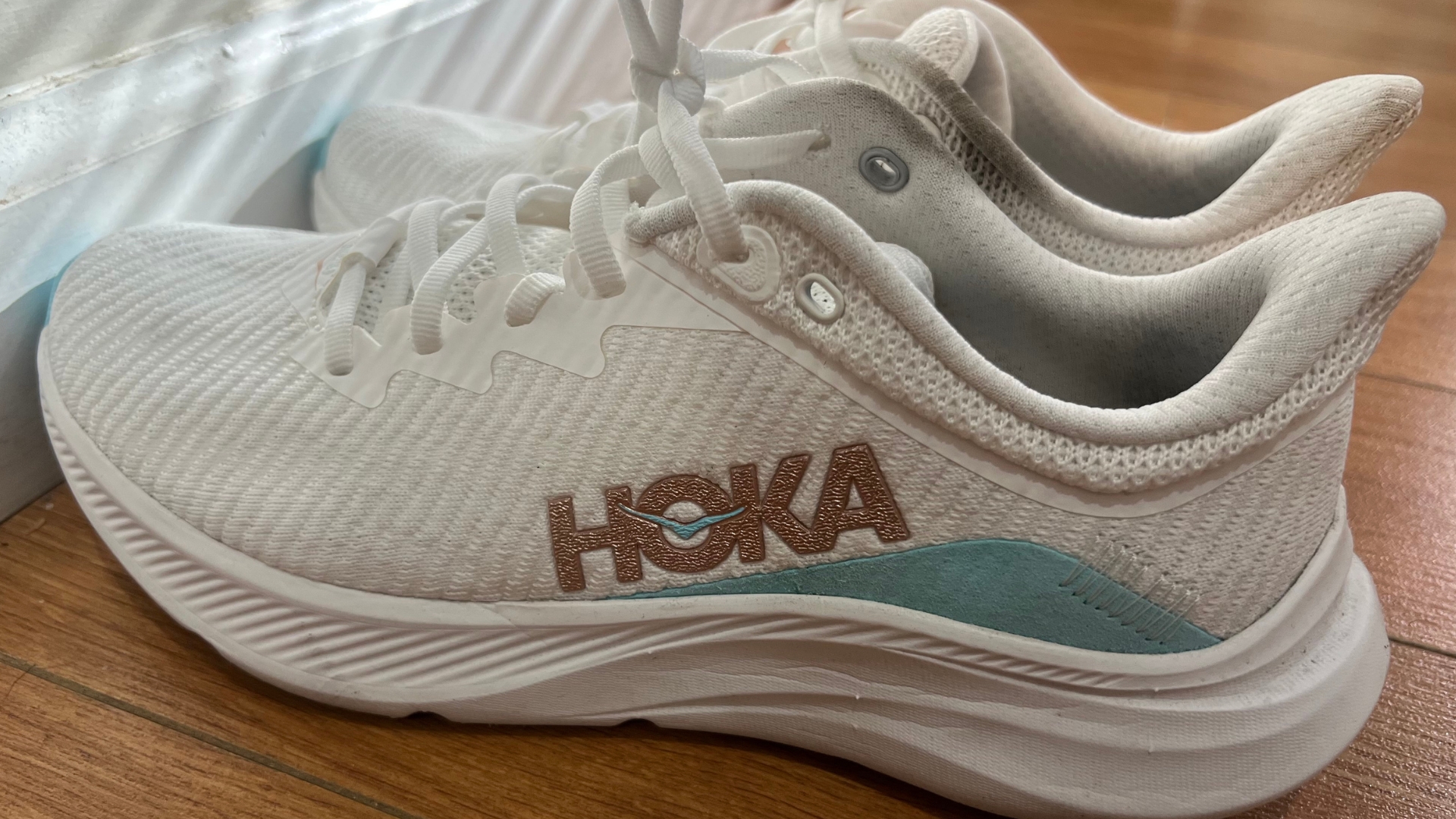
8. Hoka Solimar
Our expert review:
Specifications
Reasons to buy
Reasons to avoid
Buy it if
✅ You want a lightweight, versatile shoe that’s comfortable and supportive.
✅ You need a training shoe that transitions seamlessly between running, HIIT and resistance training.
✅ You’re curious about Hoka shoes and prefer to start with a less bulky model.
Don't buy it if
❌ You’re an overpronator looking for a half-marathon shoe—opt for more control and stability.
❌You focus on heavy lifting and need a shoe with firm ground contact and minimal toe spring.
❌You’re on a tight budget and can compromise on weight for a more affordable option.
The Hoka Solimar achieves a near-perfect balance between comfort and stability. Its pillowy midsole is springy and responsive, providing excellent support from toes to ankle.
Known for its thick, boxy soles, Hoka’s designs haven’t always appealed to me, but the Solimar has a sleeker profile and moderate heel-to-toe drop. It offers the cushioning Hoka fans love without compromising a streamlined aesthetic.
What impressed me the most was Solimar’s lightweight feel. Usually, even a moderately-dense outsole will start to feel heavy on the feet as the miles tick by. But the shoe remained lightweight throughout my weekly 5K run. The stretchy, thin mesh upper paired with the airy rubber outsole delivered a barely-there feel.
Most super comfortable trainers sacrifice stability (especially through the ankle) but the Solimar held up surprisingly well during HIIT and resistance circuits. Its lateral support was particularly impressive—the reinforced heel minimized excessive side-to-side motion, keeping me strong and stable during burpees and weighted lunges.
The Solimar signature “Meta-Rocker” technology enhances toe-off smoothness for runners, which is a bonus for treadmill or sidewalk runs. However, this design can reduce stability during weightlifting—heavy squat and deadlifts call for a more stable shoe—or other exercises requiring firm ground contact, but that’s not what the Solimar is designed for anyway.
If you’re an overpronator like me, I’d think twice about the Solimar, especially if you have long-distance runs in your training plan. While the support on these shoes felt great for the most part on shorter workouts, my ankles began to tire after a few kms/miles.
It should also be noted that at $125 the Solimar isn’t outrageously priced, but on the pricier side compared to models like Under Armour Commit 4, which offers similar comfort and support but without the same lightweight feel.
Best Nike shoe
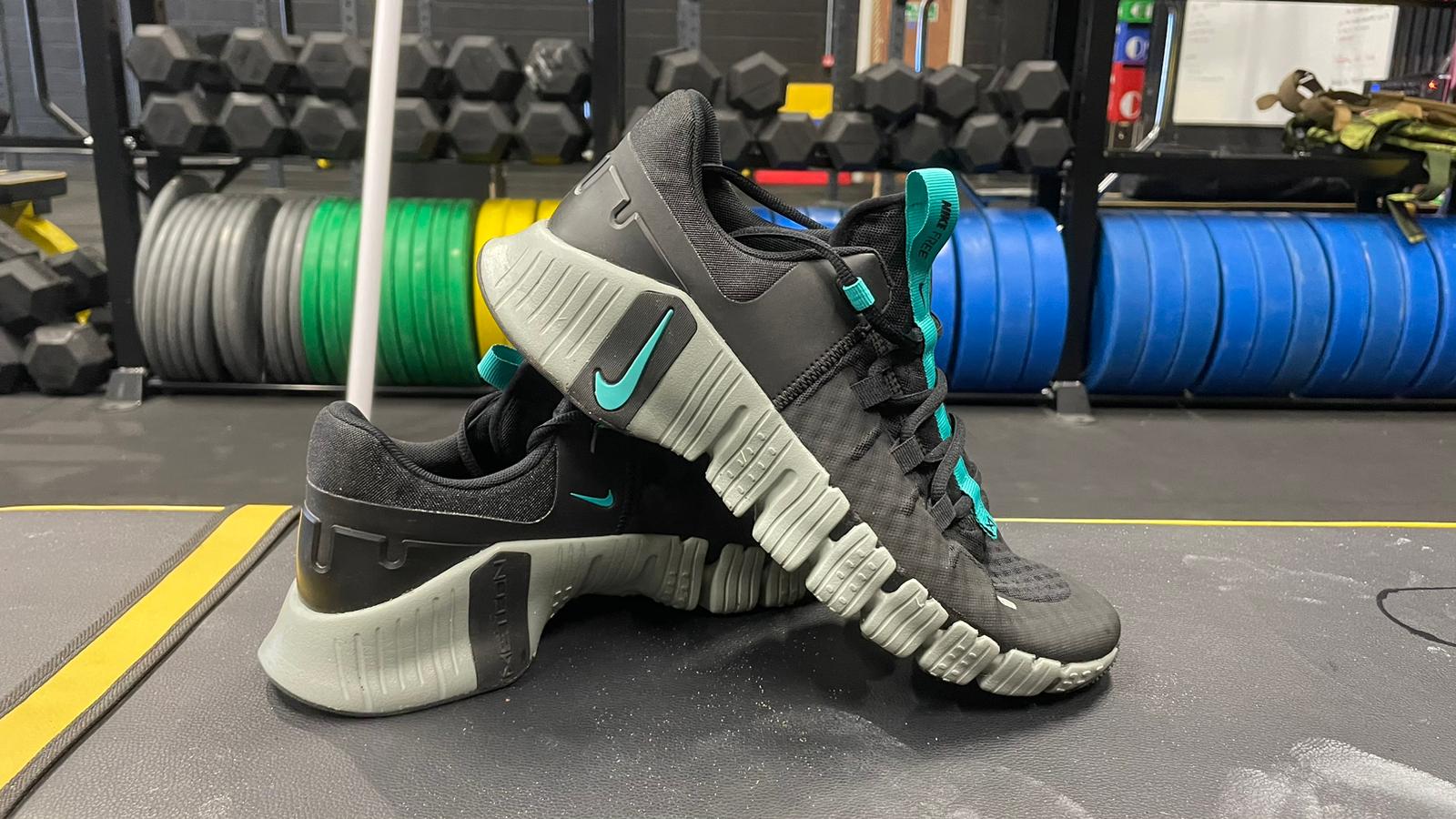
9. Nike Free Metcon 5
Our expert review:
Specifications
Reasons to buy
Reasons to avoid
Buy it if
✅ You want a do-all shoe to wear for a wide variety of exercise types.
✅ You want a cross training shoe that looks good and performs well, both when lifting and completing cardio exercises.
Don't buy it if
❌ You want a dedicated running shoe for long runs, multiple times per week.
❌ You like lifting heavy when training your legs (220lb and above).
The Nike Metcon line has a rich history in the CrossFit space, boasting a string of brilliant shoes for moving fast and lifting heavy. I was hugely disappointed by the ninth iteration, the Metcon 9s, which felt clumsy and cumbersome during HIIT workouts. Luckily, Nike had a ready-made alternative waiting in the wings: the Nike Free Metcon 5.
This spin-off of the Metcon range is designed to offer a less CrossFit-oriented approach, appealing to everyday exercisers while maintaining much of the original model's versatility. I think it looks pretty good too—an opinion supported by the numerous fitness influencers currently wearing them.
My main issue with the Nike Metcon 9 was its lack of flexibility. I had no such problem with this shoe thanks to the signature Nike Free technology in the midsole, which moves with the foot for a natural, flexible feel. This, alongside the raised rubber side walls and internal webbing around the midfoot, meant I felt far more agile and supported in the Free Metcon 5s than the Metcon 9s.
I also found the shoe’s cushioned midsole held up well during mid-length runs, topping out around the 7km mark, and the heel locked my foot in place to prevent any painful rubbing.
This model is also stable enough for lifting weights up to about 220lb without unwanted compression taking away from the overall stability. It delivers this via a wide heel platform, which creates a sturdy base for leg exercises like squats and deadlifts.
The shoe's upper doesn’t have the huge rubber midfoot wrap featured on the Nike Metcon 9 either. This feature was designed to protect the shoe from rope climbs, but I found it both unsightly and uncomfortably stiff. Instead, it’s made from a soft, accommodating mesh which felt like it molded to my foot on the first wear.
The final thing I noticed was the fit. I’m a size US11 and when I first slipped the shoe on I was worried it was slightly too short, with my toes feeling close to the end, but this wasn’t an issue when I started working out.
When all’s said and done, it’s hard to pick any major faults with the Nike Free Metcon 5. If you’re a die-hard CrossFit fan, a powerlifter looking to hit heavy lifts regularly, or a runner racking up miles upon miles, you may want to look elsewhere. But this shoe caters to pretty much everyone else.
Best TYR shoe
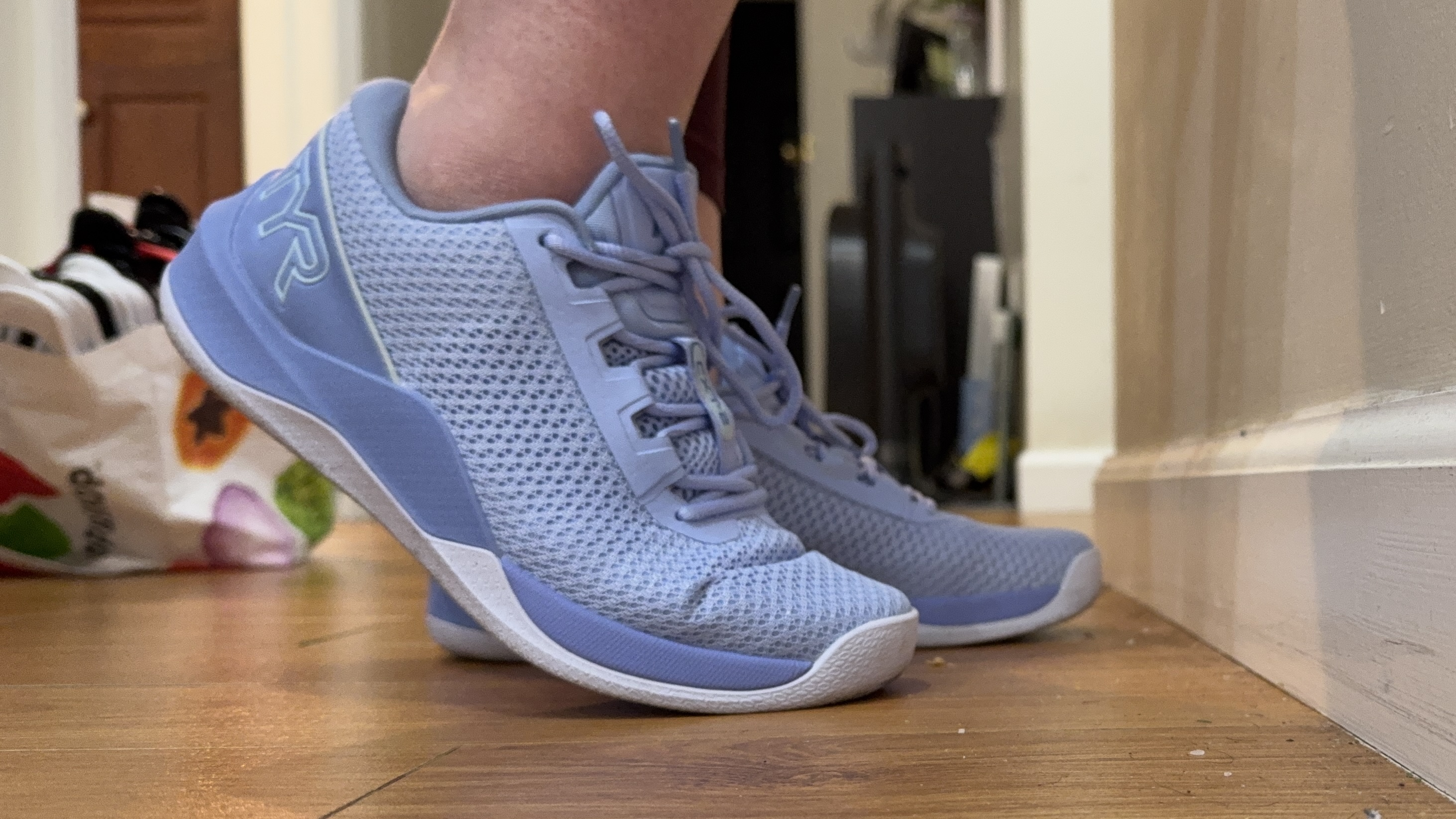
10. TYR CXT-2
Our expert review:
Specifications
Reasons to buy
Reasons to avoid
Buy it if
✅ You want a shoe for all types of resistance training
✅You want a super stable shoe that can handle some impact
✅Your workouts include CrossFit or similar mixed-modality training
Don't buy it if
❌ You have wide, flat feet or bunions—the CXT-2 fit may be restrictive.
❌ You mainly do high-intensity interval training or running—look for more cushioning.
❌ You prefer convenience over laces—the thick tongue could get in your way.
The TYR CXT-2 is the latest version of the brand’s popular cross trainers, designed full of enhanced features and stability. The sides of the shoe and the heel are reinforced with a flexible but sturdy material, making it feel very stable. It also has a supremely grippy outsole, which helped my foot stay anchored and balanced during my workouts.
I usually have to compromise some comfort and flexibility for optimum stability but this TYR upgrade strikes an ideal balance—during heavy squats and lunges, my ankles stayed stable and toes moved freely.
The shoe also has a foam midsole that offers moderate cushion and bounce for dynamic movements. They held up okay for a 20-minute HIIT workout and a light 5K walk-run but there are better options for higher-impact sessions.
Although TYR CXT-2 claims a wider fit than previous versions, the shoe still felt snug across the ball of my foot, especially tricky for anyone dealing with bunions, as I do. I don’t usually expect ‘wider-fit’ models to pinch or cause me issues so that’s something to be aware of.
One minor design flaw was the thick, padded tongue, which pressed uncomfortably against the top of my foot when the lacing system wasn’t tied properly. If you’re someone who likes to slip shoes on and off, this could be frustrating.
Best barefoot
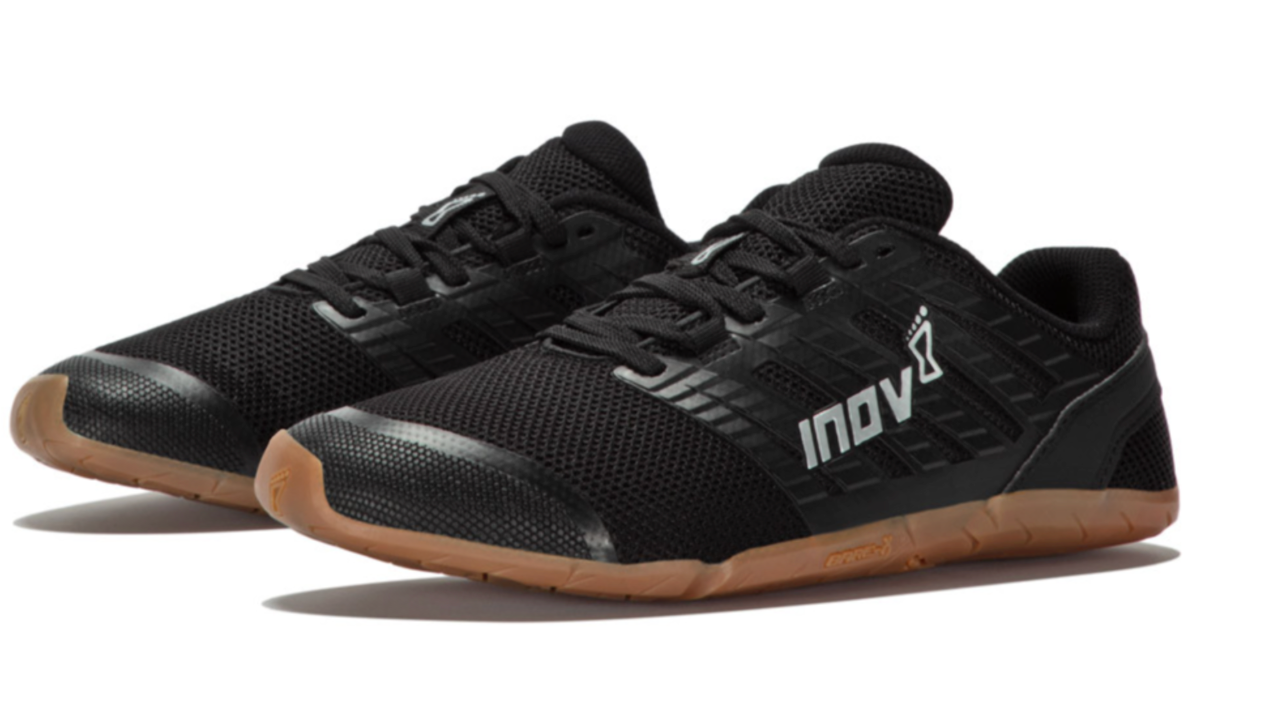
11. Inov8 Bare-XF
Our expert review:
Specifications
Reasons to buy
Reasons to avoid
Buy it if
✅ You want a versatile barefoot shoe that can be worn for all gym activities.
✅ You want a natural-feeling shoe to work out in, with a minimalist outsole that can help you strengthen your leg and foot muscles over time.
✅ You prioritize comfort and stability.
Don't buy it if
❌ You want a cushioned shoe for HIIT workouts or running.
Of all the barefoot shoes I’ve tried for training, the Bare-XF is my favorite. It has all the features you’d expect from a barefoot shoe, like a 2.5mm outsole and flexible upper that hugs the shape of the foot, but it also offers great grip, a MET-CRADLE that wraps around the foot for stability and an energetic BOOMERANG footbed.
This shoe is light: 7.4oz/210g for a US11. Pair this with its natural fit and comfort and it’s easy to forget you’re wearing anything. The comfort largely comes from Inov8’s accommodating, breathable upper, which felt like it mapped the contours of my foot like a sock. The brand has also changed the shape of its latest releases giving your toes room to spread for balance.
As someone who used to love slipping off my shoes for heavy squats and deadlifts in the gym, I enjoyed this barefoot feel when lifting heavy. I was able to grip the ground for excellent stability, and power transfer wasn’t a problem because of the absence of energy-sapping foam between my heels and the floor. I also enjoyed the shoe’s minimalist approach during my HIIT-style workouts and CrossFit WODs. Some people may prefer the shock-absorbing cushioning of the Reebok Nano X4 and ON Cloud X 3, but I liked the close-to-ground experience of the Bare-XF.
The only cross training activity I wouldn’t personally wear it for is running. I know some people swear by barefoot running shoes, but wearing the Inov8 Bare-XF for a few short intervals showed me that I prefer a shoe with more support to absorb the impact of repeated strides. To explain this, I sought expert help.
“It’s important to understand they’re not for everyone,” says podiatrist Dr Sondema Nikpmo Tarr. “There are benefits to wearing barefoot shoes, but whether they are better will be different from person to person.
“The level of padding seen with traditional cross training shoes can make your leg and foot muscles work less, making them weaker. One advantage of barefoot shoes is that they have been shown to strengthen leg and foot muscles over time.”
However, Tarr says it can take your body time to adapt to barefoot shoes, particularly if you’re used to wearing heavily cushioned modern sneakers.
“To be able to wear barefoot shoes for a full day can take upwards of a month for your feet to adapt—longer if you’re a runner. The breaking-in period for barefoot shoes is key in order to prevent joint, tendon or bone injuries.”
If you’re going to buy barefoot shoes for cross training, I think the Bare-XF should be at the top of your list, though if you’re switching from footwear with a sizable midsole stack of foam take your time when making the transition.
Best for walking
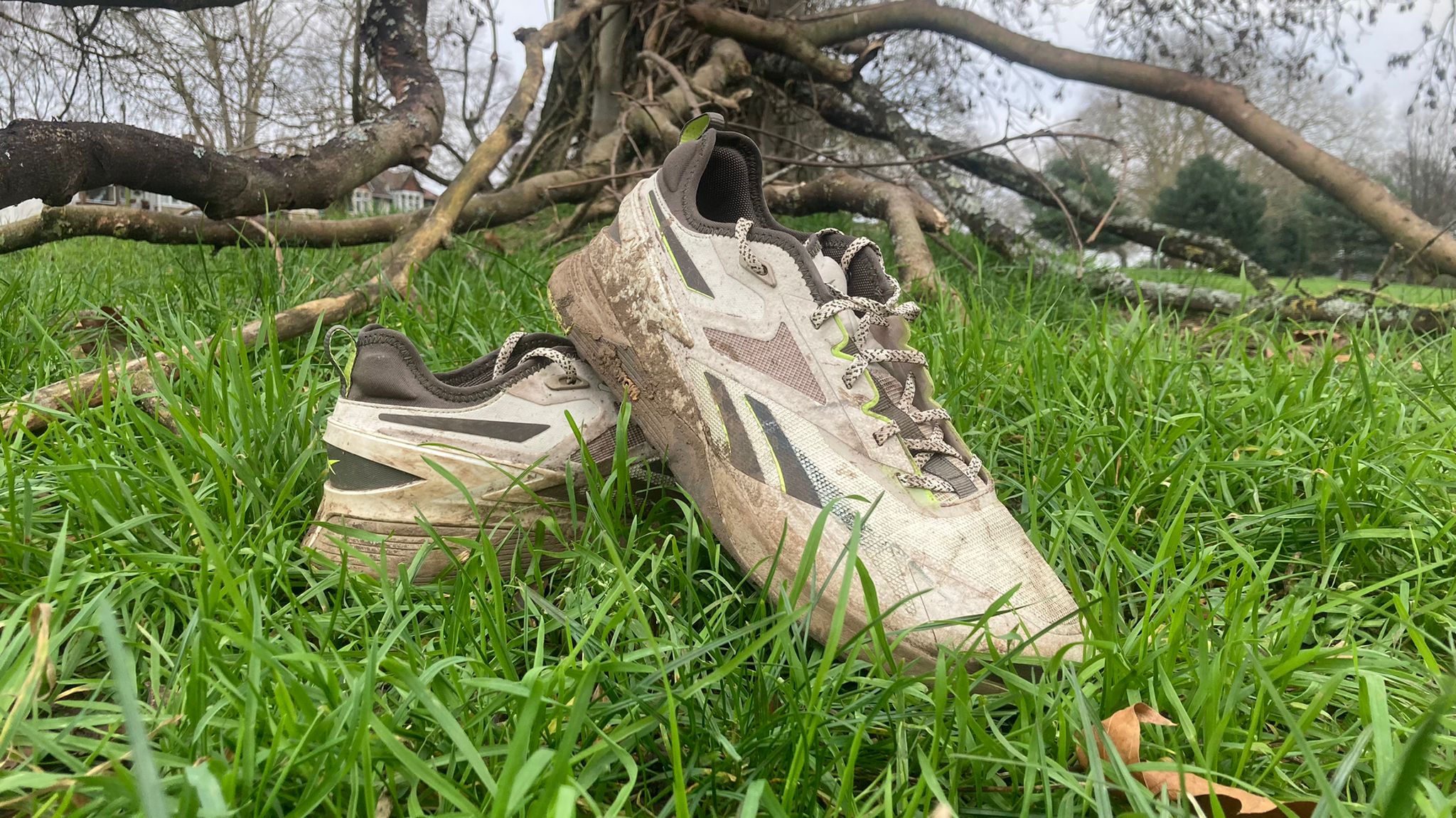
12. Nano X3 Adventure
Our expert review:
Specifications
Reasons to buy
Reasons to avoid
Buy it if
✅ You only want to buy one pair of sneakers to wear for a variety of exercise styles
✅ You like to try lots of different workouts, both in and out of the gym
✅ You want a water resistant shoe with good grip that you can walk in.
Don't buy it if
❌ You’re looking for a dedicated gym sneaker for CrossFit or lifting weights
❌ You want a shoe for running long distances
A spin-off from the popular Nano range, the X3 Adventure is a versatile shoe built to handle pretty much any activity. It has the same lift-and-run chassis as the Nano X3 model that tops this list, so it’s great for short sprints and weighted workouts. The addition of a water resistant upper and durable Vibram outsole turn it into a hardy walking shoe, which can handle difficult turf and terrain.
While the original X3 was incredibly comfortable straight out the box, I found the X3 Adventure a bit stiff at first, particularly around the ankle. But after taking a few walks, the upper started to soften, and after a month of using it the shoe it feels great.
My favourite thing about the X3 Adventure is its practicality; I can finish my workout, cycle home and take the dog straight out for a walk without wasting time changing shoes. It’s kept my socks blissfully dry while wading through wet grass and the thick lugs (grooves) in the Vibram outsole help me feel steady on my feet.
It offers a solid performance in the gym too. It feels sturdy underfoot while lifting weights, and there’s enough cushioning in the midsole to keep you comfortable during high-impact workouts.
The only reason this shoe falls behind the standard X3 in my rankings is because I found the thicker Vibram outsole made it feel a bit clunkier during explosive, quick-footed exercises like burpees and jumping lunges. As a result, I didn’t think the “ground feel” was as good.
But if you’re someone who wants one pair of shoes that will see you through most activities then this is a great option, particularly if you like taking your workouts outdoors with a hike or al fresco HIIT session.
Also tested

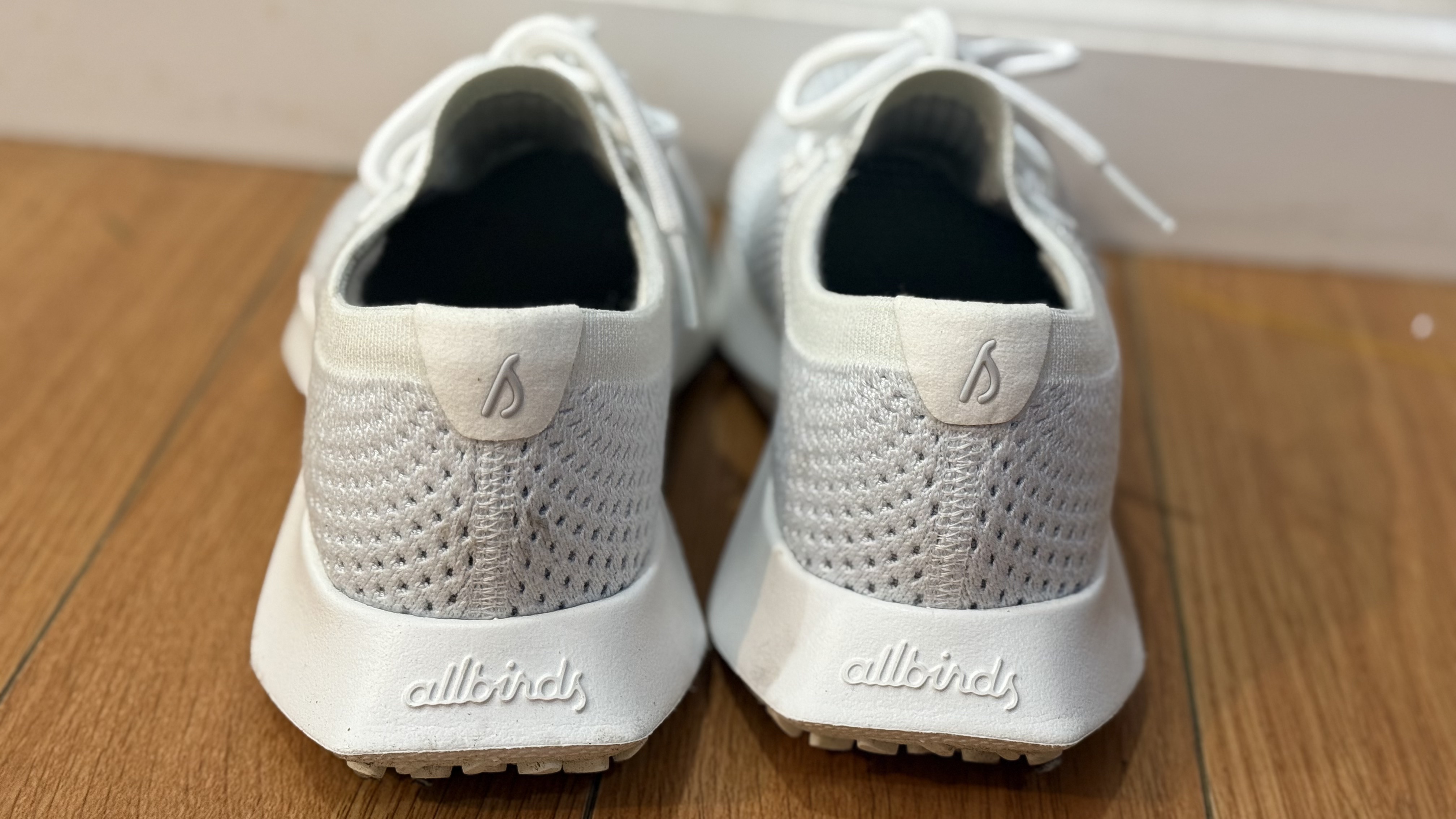

Allbirds Tree Dasher 2
Our expert review:
Specifications
Reasons to buy
Reasons to avoid
Buy it if
✅ You need an athletic shoe that’s versatile enough to wear for workouts and brunch.
✅ You want a comfortable shoe with decent support for walking and light resistance training.
✅ You prefer a trainer made with flexible mesh and thinner outsoles.
Don't buy it if
❌ Your workouts consist mainly of long-distance running or heavy weight training. You’ll want a shoe designed specifically for your stride or activity.
❌You need a shoe with strong lateral support. The upper mesh provides some structure, but there are more supportive shoes on the market.
❌ You’re on a budget. Chances are you can find an equally as versatile shoe for less, although you may be sacrificing some comfort.
The Allbirds Tree Dasher 2 pairs well with your favorite jeans and your favorite workout clothes, and that’s a flex most sneakers can’t claim.
The mesh upper and lower-profile rubber outsole lend themselves to everyday wear better than traditional athletic shoes, without compromising on the cushioned support that casual shoes normally lack. I wore the Tree Dasher 2s almost all day every day during testing.
Inside the gym, the Allbirds Tree Dasher 2s performed quite well. I felt stable enough for moderately heavy dumbbell squats and deadlifts, and treadmill walks felt comfortable and supported. Short jogs felt okay too, but since I’m an overpronator my feet didn’t feel stable enough to run more than a mile in them. That’s something to keep in mind if you don’t have a neutral stride.
While the mesh upper is a plus for comfort, it’s a drawback for high-impact activity. While doing a round of HIIT, my ankles wobbled considerably during exercises like skaters and high knees. That being said, the Tree Dasher 2s didn’t feel quite as unstable as other mesh shoes I’ve tested and I was impressed at the level of stability they provided given their materials.
The Allbirds Tree Dasher 2 claims to have an “easy slip-on design,” but to be honest I was never successful at doing so and always had to bend over and pull them on. They’re also expensive—at $135, the Tree Dasher 2s are almost as pricey as my tech-heavy running shoes. However, it’s also worth flagging that this is an eco-friendly shoe, made from sustainable vegan materials. If that’s important to you, the price tag is justified.
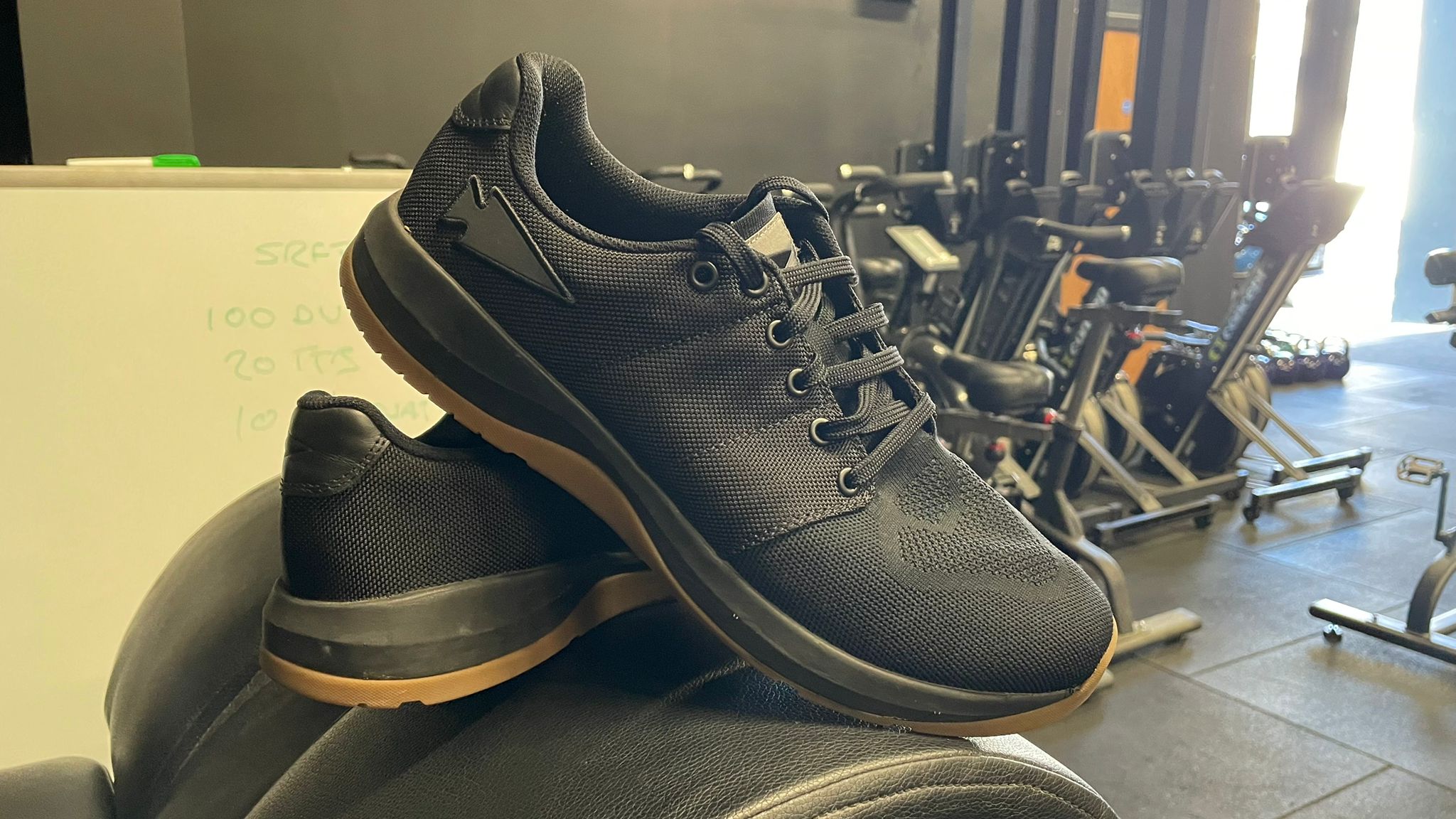
GoRuck ballistic trainer
Our expert review:
Specifications
Reasons to buy
Reasons to avoid
Buy it if
✅ You’re after a robust cross-training shoe for a range of gym or outdoor activities and workouts
✅ You want a great all-rounder
✅ You want a shoe with support for short runs and stability for lifting weights
Don't buy it if
❌ You want a cushioned cross-training shoe for longer runs.
❌ You don’t like a firm ride in your training shoe.
Some people I’ve spoken to refuse to give the GORUCK Ballistic Trainer a chance because they don’t like the look of it—granted, $140 is a lot to spend on a design you don’t like. But these people are missing out on a solid cross-training shoe.
Though the plain design has an air of "golf shoe" about it, GORUCK’s attention to detail is evident when you lift the shoe’s metaphorical hood.
There are three arches in the foot—two running along the sides of the foot and one across the ball—and GORUCK’s 3X Support has been designed to support them all during dynamic movements like running and plyometric exercises. I tested this out by doing a 5km run which I followed up the next day with a circuit involving burpees, jumping lunges and thrusters. The shoe performed admirably throughout the exercises and felt solid and supportive across the base of my foot.
The upper isn’t the most breathable and it’s an undeniably firm ride, which is sure to split opinion—if you’re in the market for a more cushioned cross trainer, consider the ON Cloud X 3 or Reebok Nano X4. But the shoe was supportive, keeping my feet comfortable throughout both workouts.
The shoe’s performance was far less divisive when the time came for lifting weights—it was excellent. The upper hugs the heel in place before widening around the forefoot, allowing me to splay my toes for balance. The midsole feels incredibly stable under even the heaviest weights, and the shoe also has a larger-than-normal 8mm offset, lifting my heels slightly to get into a better position for squats.
Despite this impressive performance, there aren’t many superlatives to describe the GORUCK Ballistic Trainer—I find the TYR CXT-1 is the best cross-training shoe for lifting, while the R.A.D One is the best for high-energy exercise classes. Instead, this shoe is a solid all-rounder. But there is one area where it excels above all others: durability.
After weeks of regular wear, there wasn’t a blemish on it. Unlike many rivals, there was no exposed glue, rough edges or loose stitching either; the build was immaculate. The robust rubber outsole is ready for rucking on any surface, while the lace area, midfoot and heel are made from two panels of Special Forces-grade ballistic nylon.
In summary, it’s a brilliantly versatile training option with plenty of legs, making it a great fit for anyone with a demanding exercise regime who wants a shoe that can go the distance with them.
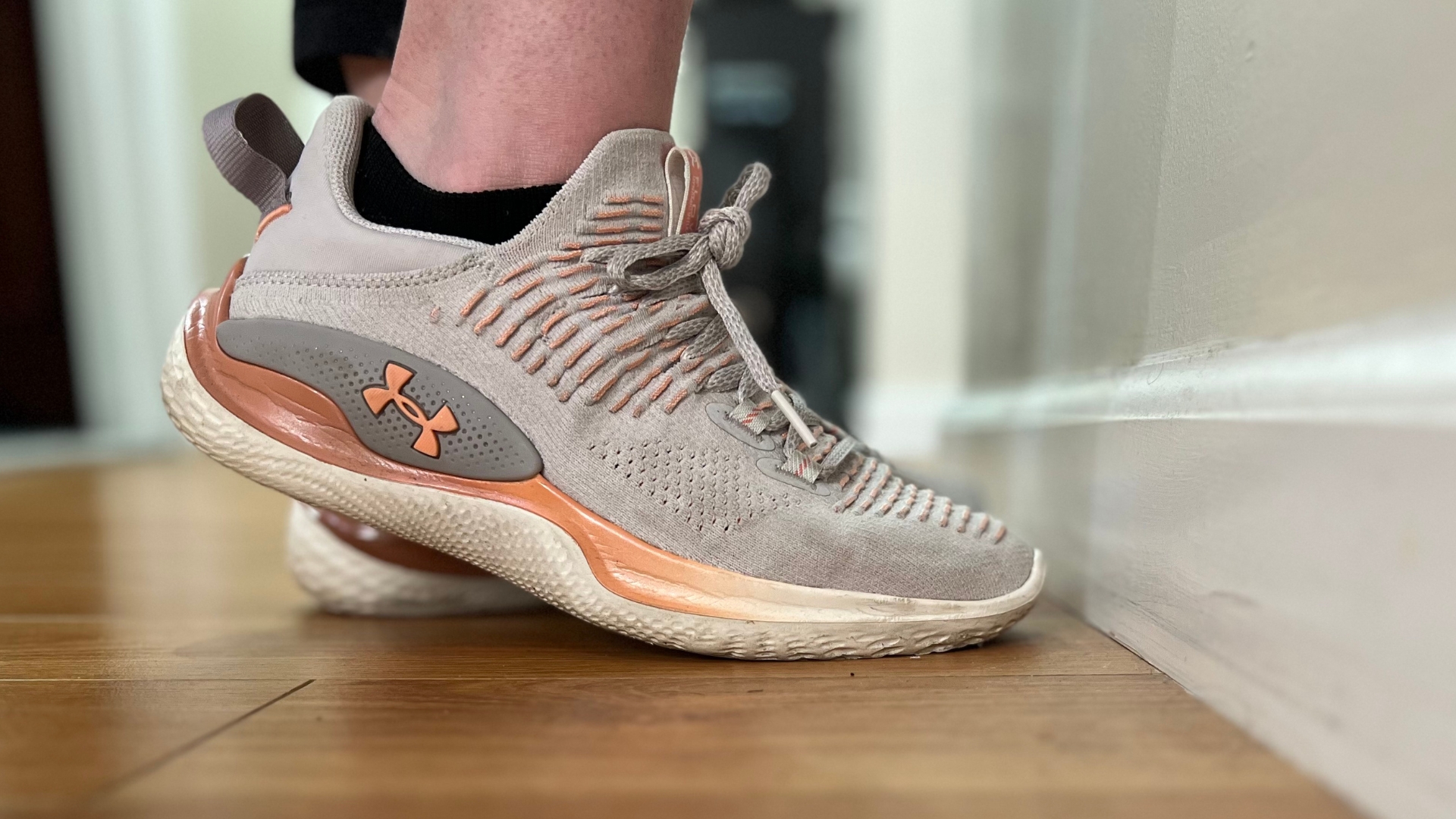
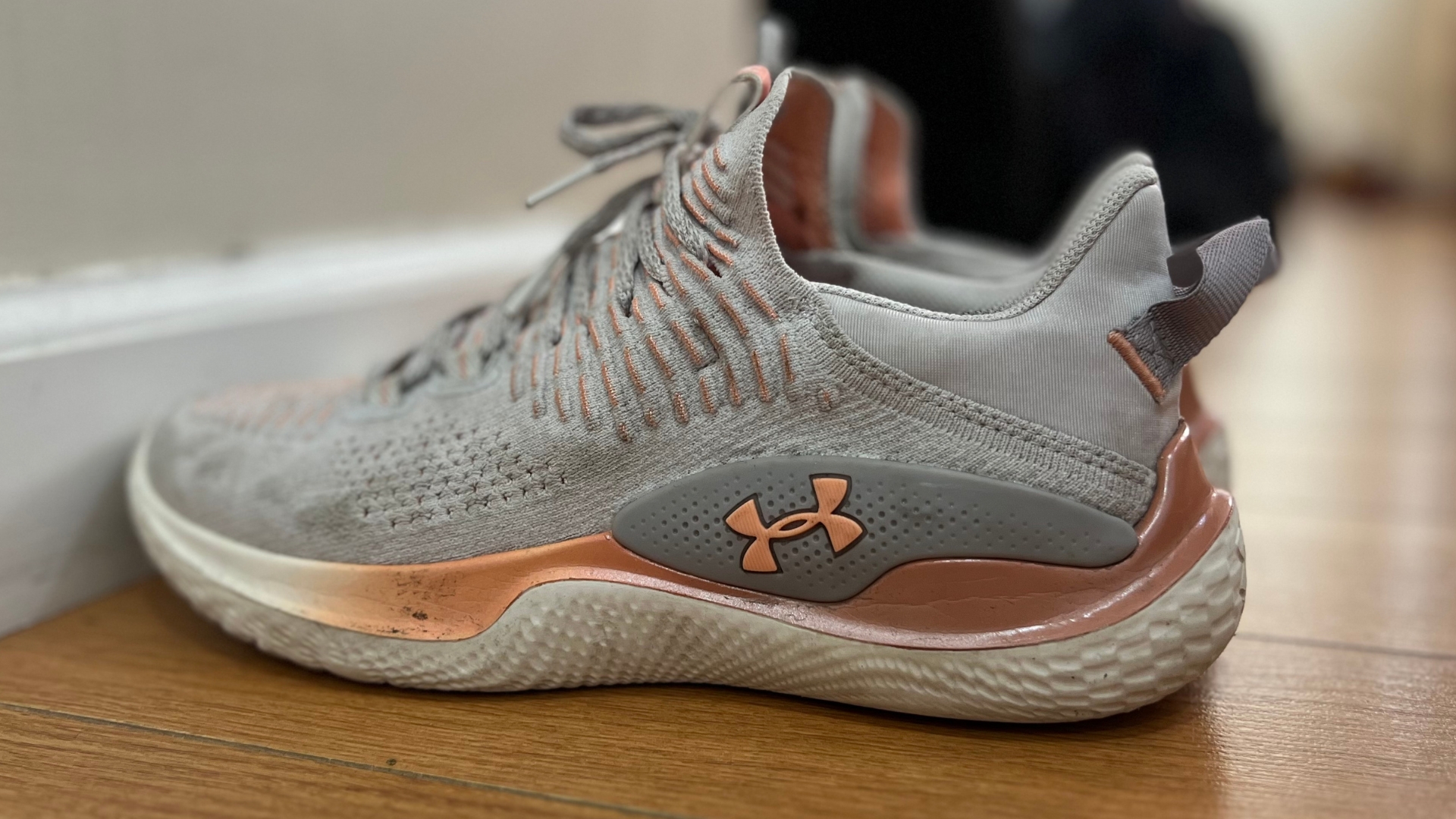

Under Armour Dynamic IntelliKnit Ele-Grit
Specifications
Reasons to buy
Reasons to avoid
✅ You prioritize plush comfort
✅ You need a shoe that doesn’t need a painful break-in period
✅ Your routine consists mainly of walking and moderate resistance training
❌ You overpronate or need stronger lateral support for high-impact workouts
❌ You’re on a budget and can compromise on cushioning for affordability
❌ You prefer durable outsoles and robust lateral support.
If comfort is your main priority when choosing a training shoe, the Under Armour Dynamic IntelliKnit Ele-Grit will not disappoint.
Sliding on the Ele-Grit feels like slipping into a pair of house slippers. The upper, crafted with Under Armour’s lightweight “IntelliKnit” material, stretches and conforms perfectly to your feet. I have sizable bunions but these shoes didn’t require the usual (and painful) break-in period—no new-shoe throb at all, which was very impressive.
The shoe’s comfort is further enhanced by Under Armour’s “Flow” technology, which integrates a cushy midsole and responsive outsole. Despite the ample padding, the Ele-Grit shoe remains lightweight and free of bulk, making walking and light resistance training a breeze, while still feeling supported.
However, the shoe does show limitations during high-impact or lateral movements. During HIIT exercises and a mid-distance run the IntelliKnit upper lacked sufficient support on the sides—particularly for someone like me with flat feet and severe overpronation. This led to instability during high knees and squat jumps and achy ankles halfway through a 5K run. If you have a more neutral stride, this might not be as much of an issue.
The knit material, while breathable, has a tendency to stain easily, which, while a minor gripe, could be inconvenient. Additionally, the price point feels steep compared to other versatile options, like the more affordable Under Armour Commit 4 or the durable and trusted Brooks Adrenaline, which is my usual training shoe.

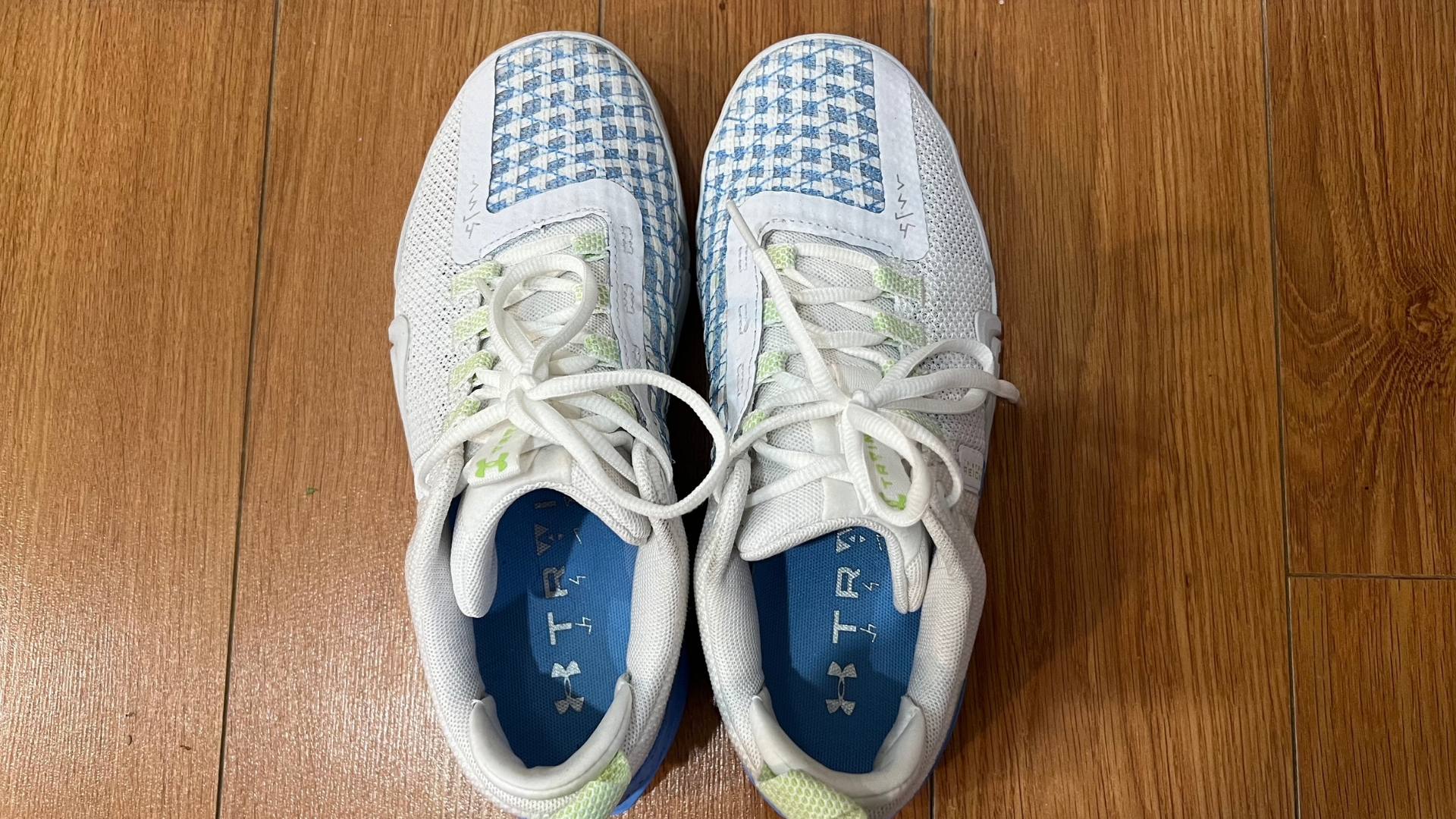
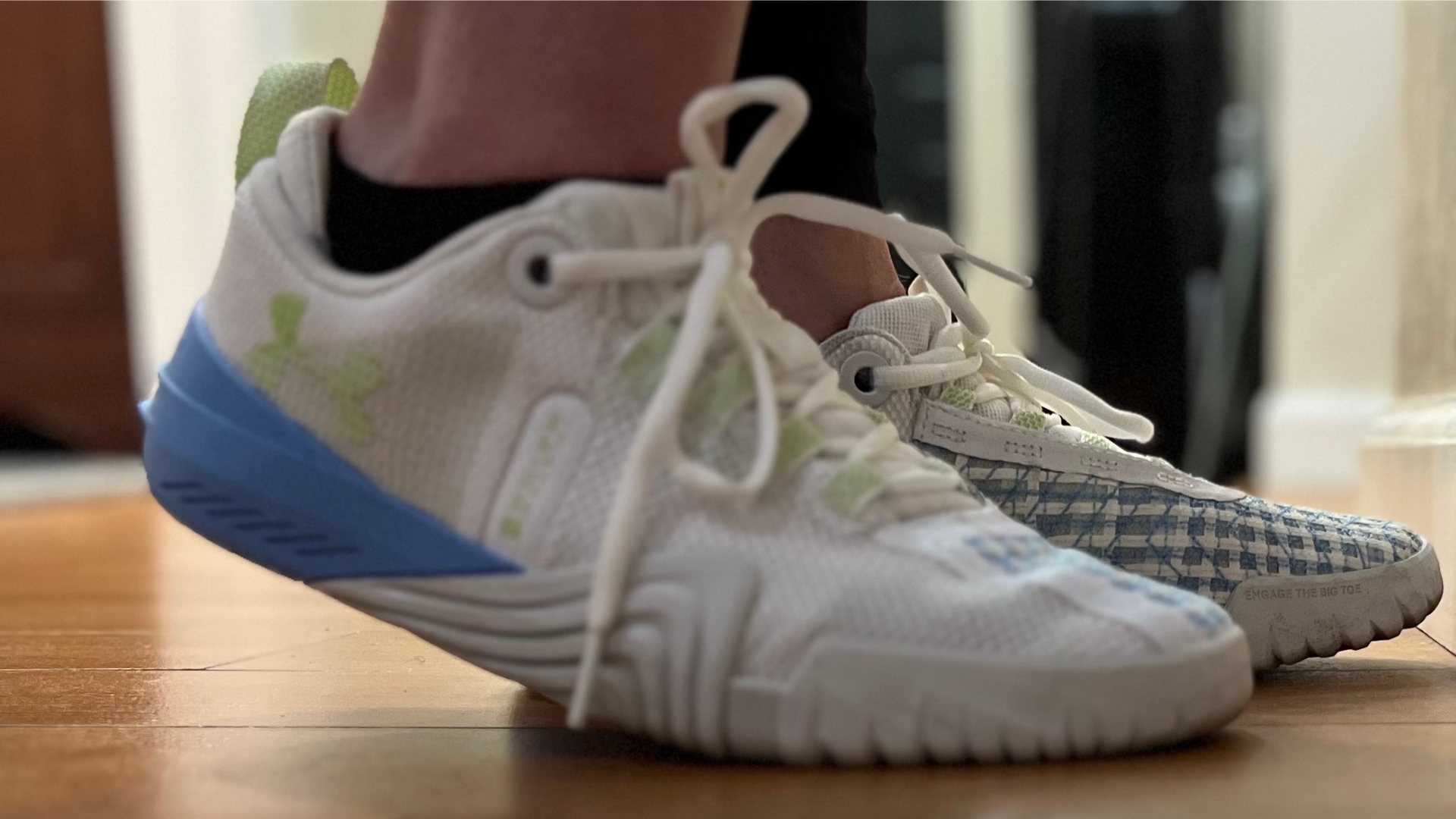
Under Armour Reign 6
Specifications
Reasons to buy
Reasons to avoid
Buy it if
✅ You need a shoe that supports and grounds your feet during heavy lifting.
✅ You need a durable shoe for outdoor obstacle courses, like Tough Mudder or Spartan Race.
✅ You prefer a cross training shoe without a lot of cushioning.
Don't buy it if
❌ You’re a cardio junkie who mainly does walking, running or HIIT. Look for a shoe with more cushioning.
❌ You want a lightweight shoe. The Reign 6 feels heavy during wear.
❌ You’re on a budget. At $130, the Reign 6 is a bit pricey unless it suits your needs.
The Under Armour Reign 6 may not be as plush as some cross-training shoes on the market, but that could be a good thing depending on your favorite activities.
The first thing you’ll notice about the Reign 6 is its thick rubberized outsole, equipped with deep grooves for the best traction possible for all-conditions training. This feature is ideal for competing in outdoor obstacle races or CrossFit workouts—I’m sure the Reign 6 has never met a rope it can’t climb.
Many cross trainers use a design feature called toe spring to improve foot propulsion during walking and running. The downside to toe spring is that it can hinder proper contact between your big toe and the ground—one of the reasons why most sneakers aren’t appropriate for lifting.
The Reign 6 doesn’t have any toe spring, and without the springy cushioning found in popular cross trainers, it makes it a top choice for weightlifting—I was able to squat, deadlift and lunge while feeling stable and anchored to the ground. Under Armour’s trademarked “TriBase” triangular plate provides three solid points of contact with the floor, which kept me feeling supported during all my heavy barbell sets.
The Reign 6 shines in the weight room, but may not be ideal for long cardio sessions. It performed adequately for a short HIIT class but left my feet cramping up after a 5K run. The lack of cushioning takes some getting used to, especially if you’re accustomed to more padded cross training shoes.
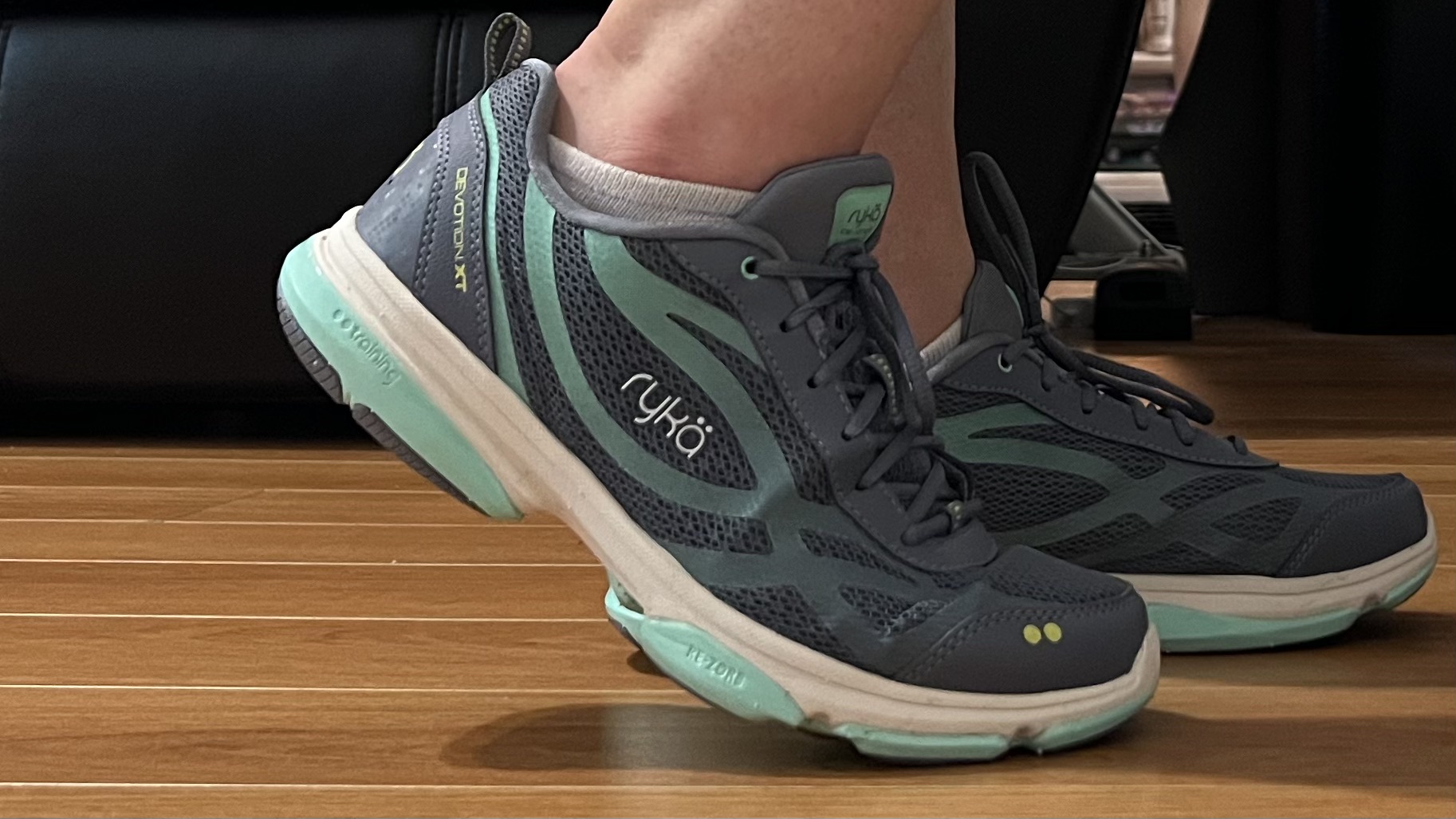

Ryka Devotion XT training shoe
Our expert review:
Specifications
Reasons to buy
Reasons to avoid
Buy it if
✅ You love Zumba or Jazzercise classes and you want to avoid twisting your knee or ankle.
✅ Your workout routines consist mainly of light or moderate resistance training and treadmill/pavement walks.
✅ You’re a woman who has a hard time finding sneakers that fit your slightly wider toe and narrower heel.
Don't buy it if
❌ You plan to do a lot of heavy lifting, HIIT workouts, or mid to long-distance running. You’ll either want a shoe with minimal or no cushioning, or one specifically designed for running.
❌ You have flat feet and need a lot of motion control and stabilization through the ankle. You’d be better off with a shoe designed for overpronators.
As a certified personal trainer, one of my best pieces of advice is to find an activity you love and stick with it. For many, the high-energy vibes at a dance class are the best form of motivation.
The one drawback to dance fitness formats like Zumba and Jazzercise is that the choreography can sometimes lead to twisted ankles and knees, usually during movements where the ball of the foot is planted on the floor and the knee and hip revolve around it. Thankfully, Ryka has solved that problem with the Devotion XT training shoe.
The Devotion XT’s outsole features a smooth, circular patch under the ball of the foot called a +Pivot Point, which allows the wearer to twist and turn their feet in a fluid motion. I wore them for a 30-minute Zumba class, and for the first time ever I was able to perform the movements without my shoes catching or sticking on the floor. This felt a lot safer (and a lot more comfortable) for my ankle and knee joints.
Not only great for dance fitness, the Devotion XT’s super soft insoles and shock-absorbing EVA make them a good choice for walking or light to moderate circuit training. My feet felt well-cushioned when I tackled a treadmill session.
If you’re into more intense athletic pursuits like powerlifting, HIIT training, or running, the Ryka Devotion XT may not be your best shoe option. During a round of burpees and box jumps, I felt my ankle give way a few times due to the lack of strong lateral support around the heel.
While all that cushioning may feel nice, it will negatively affect your foot stability—a crucial element when you’re lifting heavy weights or running long distances. In fact, I removed the shoes after performing a few warm-up barbell squats because I felt so unstable. Additionally, my foot started to feel a bit squashed after an hour of wearing them, despite the wider toe box. - Reviewed by Jennifer Rizzuto

Vivobarefoot Primus Lite III
Our expert review:
Specifications
Reasons to buy
Reasons to avoid
Buy it if
✅ You’re committed to transitioning into barefoot shoes.
✅ You’re experienced in fitness and seeking a shoe that encourages a more natural stride and ground connection.
✅ You’ve already familiar with barefoot shoes and want a more classic-looking model.
Don't buy it if
❌ You’ve never worn barefoot shoes and need a new pair of sneakers for next week’s 5K.
❌ You’ve just started exercising regularly and finding it hard to stay motivated. Stick with traditional sneakers for now.
❌ You have chronic foot issues or injuries. While the Primus Lite III could help, consult a healthcare professional before making the switch.
Wearing the Vivobarefoot Primus Lite III with its wide toe-box, low drop and minimal cushioning will train your feet to move more naturally, more so than traditional footwear. Without the cushy insoles and high-tech stabilizers found in traditional shoes, your foot has to work harder to propel and support your body during movement. That improves your stride and overall strength and stability.
However, transitioning to barefoot shoes and wearing them for all your activities isn’t an overnight process—just as you can’t expect to lose 50 pounds instantly. It takes time to build the necessary foot strength and rushing the process could lead to discomfort or injury. Fortunately, Vivobarefoot offers a free course to guide you through this transition.
I don’t wear barefoot shoes often but I enjoy using them for heavy squats and deadlifts. The Primus Lite III provided a good compromise between my cushioned running shoes and going barefoot. They kept my feet feeling strong, stable and well-connected to the floor during my lifts—more so than with traditional sneakers. Plus, the more classic design helped me feel more comfortable wearing them.
On the flip side, they didn’t work so well for my cardio workouts. A 30-minute treadmill walk in the Primus Lite III left my ankles feeling sore, HIIT circuits were tough on my joints and running my usual 5K wasn’t even possible—I switched shoes half a mile in.
To be fair, my feet have some issues. Genetics and years of wearing unsupportive shoes have left me with overpronation and large, aching bunions. Although wearing the Primus Lite III consistently might improve my foot health, I don’t have the time or energy to make the transition. If I find it challenging as a fitness professional, I imagine it’s even more challenging for beginners. - Reviewed by Jennifer Rizzuto
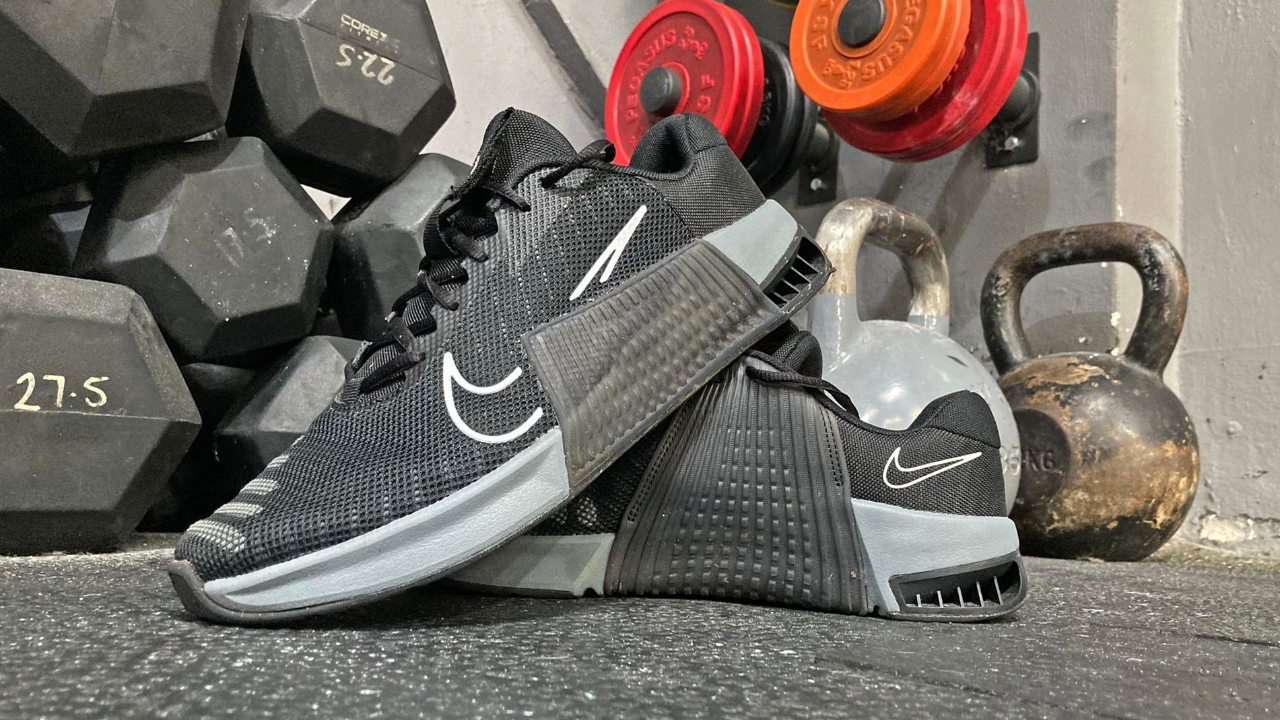
Nike Metcon 9
Our expert review:
Specifications
Reasons to buy
Reasons to avoid
Buy it if
✅ You want a great all-rounder that has stability for lifting weights while being lightweight and cushioned enough to keep you comfortable through cardio-heavy sessions.
✅ You appreciate features that elevate the performance of the shoe, like the lace-lock, Hyperlift plate and midfoot rubber wrap.
✅ You regularly attend CrossFit classes and are looking for a shoe that can stand up to the rigors of this training style.
Don't buy it if
❌ Your training plans involve a heavy amount of running and you don’t also own a pair of running shoes.
❌ You’re looking for a cross training shoe that costs less than $100.
❌ You want something that feels light and flexible on your foot.
Nike’s latest CrossFit shoe features key upgrades from its predecessors, with a wider toe box allowing lifters to splay their toes for balance during heavy leg exercises. There is an enlarged Hyperlift plate in the heel, too, forcing wearers’ weight downward and providing rigidity.
I found it more comfortable than the Metcon 8 and the Metcon 7 and it still has a stable base for lifting weights. This is paired with a more plush layer of dual-density midsole foam to provide extra cushioning for high-impact cardio exercises.
Another upgrade is to the rope guard—the large, eye-catching wall of rubber that wraps around the middle of the shoe. The primary purpose is to provide grip and protect the shoe when climbing ropes, which is a staple movement in CrossFit training sessions. However, I found this unsightly and cumbersome, which is why this shoe has dropped down the ranks in this guide.
If your focus is on lifting heavy, I also prefer the superior foot-ground connection of the Nike Metcon 8. This shoe feels very rigid too me, too, and a little cumbersome during fast-footed HIIT workouts. I would opt for the cheaper Metcon Free 5, which looks better and has a superior performance.
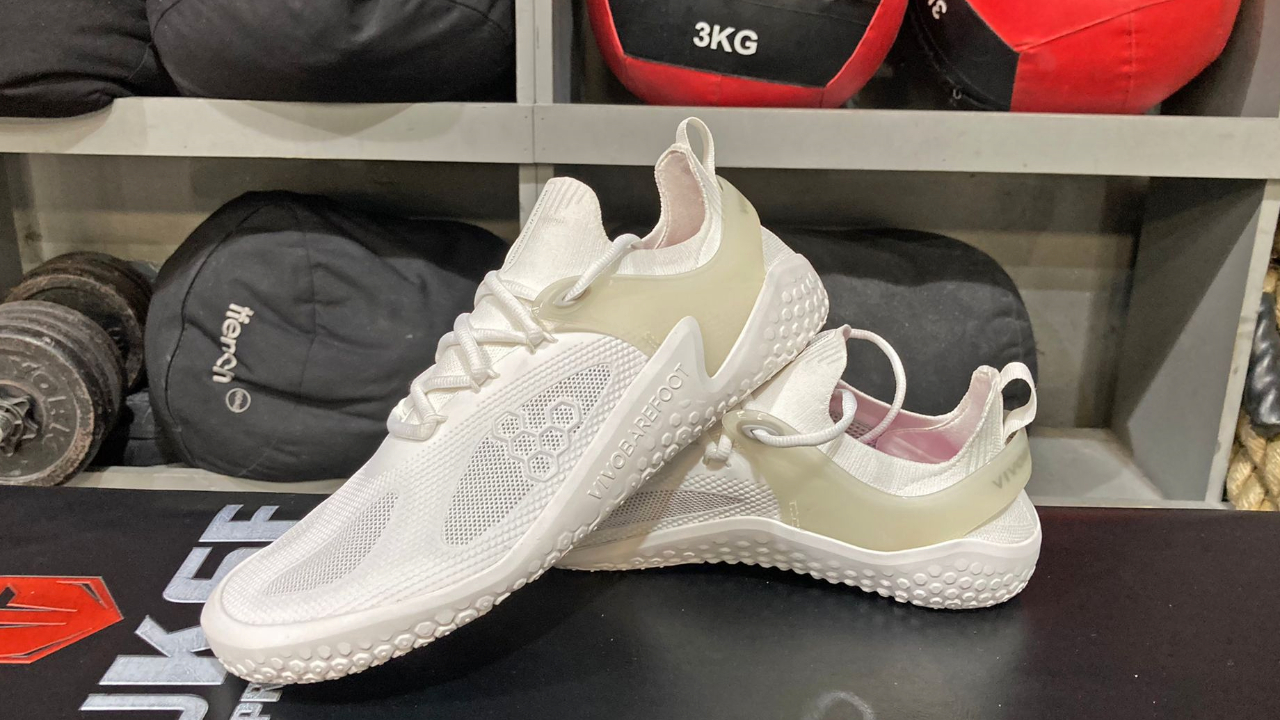
Vivobarefoot Motus Strength
Our expert review:
Specifications
Reasons to buy
Reasons to avoid
Buy it if
✅ You want to strengthen your legs and feet by reducing the cushioning in your shoes.
✅ You’re looking for a shoe that offers a natural fit that mirrors the shape of your foot with a wide toe box.
✅ You want a thin sole for improved ground feel, training your feet to react to uneven surfaces to improve your balance.
Don't buy it if
❌ You want a shoe you can wear straight away, as barefoot shoes take time to adjust to.
❌ You enjoy plenty of cushioning in your shoe to take pressure off your lower-body joints.
❌ You want lots of features and tech to help improve your weightlifting, such as the Nike Metcon 9’s Hyperlift plate.
Off the back of the boom in barefoot shoes, Vivobarefoot has released the Motus Strength: a minimalist shoe designed for strength-training. It has the usual ultra-thin outsole, as well as added stability elements—like durable rubber that rises around the side of the shoe—to provide support.
However, the brand still aims to provide a natural feel with a lightweight, flexible shoe that moves with your foot. It also retains the signature wide toe box that mirrors the shape of the foot, allowing you to spread your feet for balance during dynamic exercises. But what are barefoot shoes, and who should consider switching to them?
“The defining features of this footwear include razor-thin soles, a wide toe box and flexible materials. These features combine to afford your feet ultimate flexibility and feel,” says the strength-and-conditioning coach Seth Forman, head of education and training at mobile gym brand Kayezen.
“It’s also important to understand they’re not for everyone,” says podiatrist Dr Sondema Nikpmo Tarr. “There are some benefits to wearing barefoot shoes, but whether they are better will be different from person to person.
“The level of padding seen with traditional cross training shoes can make your leg and foot muscles work less, making them weaker over time. One advantage of barefoot shoes is that they have been shown to strengthen leg and foot muscles over time.”
However, you can’t just slip a pair of barefoot shoes on and start training.
“The drawback of barefoot shoes is that, for many people, it will take time for your body, and especially your feet, to adapt to this style of shoe if you have been wearing standard modern footwear,” says Tarr.
Tarr adds: “To be able to wear barefoot shoes for a full day, it can take upwards of a month for your feet to adapt to these shoes—longer if you are a runner. The breaking-in period for barefoot shoes is key in order to prevent joint, tendon or bone injuries.”
If you’re going to switch to the Vivobarefoot Motus Strength for strength exercises or cross training make sure to ease yourself into wearing them before using them for a full session. If your training has a running bias, you may also want to look at the Vivobarefoot Primus Lite III.
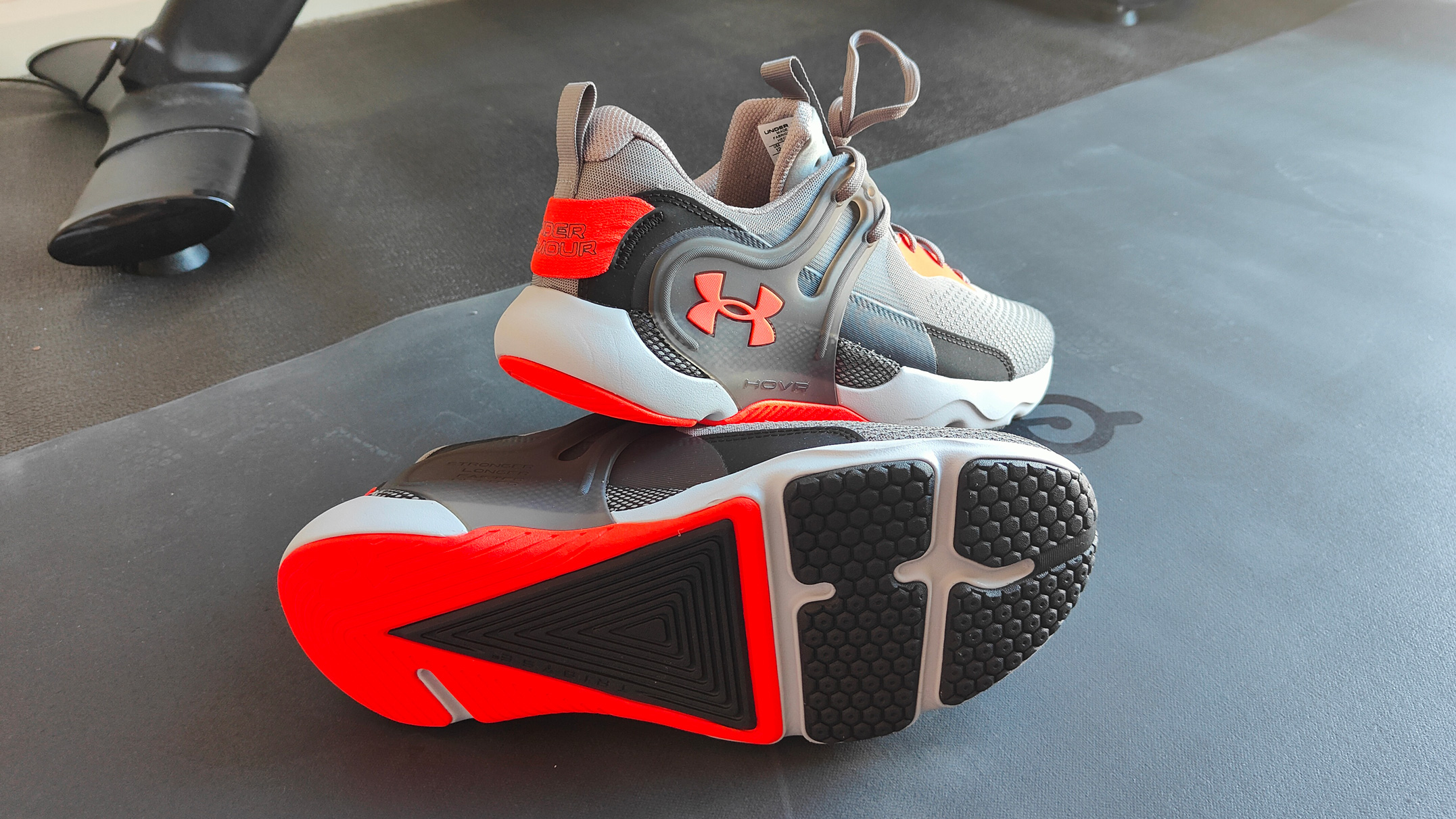
Under Armour HOVR Apex 3
Our expert review:
Specifications
Reasons to buy
Reasons to avoid
Buy it if
✅ You are looking for a cross training shoe that prioritizes comfort and is well-suited to wide feet.
✅ You want a non-specialist shoe that can do a bit of everything in the gym without specializing in one area.
✅ HIIT-style training is your chosen exercise method.
Don't buy it if
❌ You want a sleek and stylish shoe.
❌ You’re looking for sneakers to provide stability for weightlifting.
❌ Your training plans have a running bias.
Many of the shoes we’ve listed so far have been created specifically for CrossFit. Given the diverse nature of this training style, this means these shoes are similarly versatile, but they usually have limited cushioning to allow you to perform Olympic weightlifting moves and heavy barbell leg exercises while feeling stable.
The Under Armour HOVR Apex 3 is different. This is a cross training shoe through and through, and as such it has more cushioning courtesy of a fairly thick UA HOVR foam midsole. I found it was brilliant for HIIT-style training, providing great bounce, energy and support during explosive exercises. The shoe has a breathable mesh upper which kept me cool during sweaty sessions and a strap construction for extra heel stability and midfoot support.
The extra cushioning doesn’t mean you can’t lift weights though. The shoe is still stable enough for leg exercises with light-to-moderate kettlebells, dumbbells and barbells, due to Under Armour’s popular TriBase technology. This maximizes contact with the ground to provide a low, stable outsole, and I found the shoe came into its own during weighted squats and deadlifts. Combined, these features create a quality, versatile workout shoe.
The design of the shoe was bulky and busy to me, but this is subjective. What can’t be argued is its reliable all-round performance, which will satisfy general gym-goers who split their time between the weights section, workout classes and HIIT sessions.
How we tested the best cross training shoes
Before we recommend a set of the best cross-training shoes, we put them to the test to see whether they offer the right level of support you need for multi-activity workouts. Before we even lace up a pair, we look at whether the shoe has a men's, women's, or unisex edition.
One of the most important factors is how comfortable they feel, so we evaluate the overall fit, the types of materials used, and whether the shoes need to be worn before they soften. Similarly, we check to see if the fabrics are breathable to help you avoid sweaty feet.
As we use them for our own workouts, we consider how supportive they feel during different exercise styles. To see if they're best suited for certain activities, we wear them during HIIT workouts, quick cardio sessions, and resistance training and weight lifting.
We take note of essential design considerations like the amount of lift around your heel, how much cushioning is in the sole and where on your foot it is, and if there's sufficient support around your ankle.
FAQs
What are cross training shoes?
Cross-training is the practice of filling your exercise plans with a range of activities to develop all-round fitness and have fun doing it—variety is the spice of life after all.
Cross-training shoes are designed to handle the demands of this varied fitness routine. This means balancing the cushioning and support needed for short runs and high-impact exercises with the stability required when lifting weights.
On top of this, any cross-training shoe worth its salt will need to be lightweight, breathable and comfortable, allowing you to keep your cool during fast-paced workouts.
Cross-training shoes do have their limitations. Because they have to balance the features needed for a range of activities, it’s unlikely they’ll be as good as purpose-built sneakers for specific exercises.
For example, a cross-training shoe is good for lifting weights and short runs, but doesn’t have the cushioning you want for covering longer distances. You’ll want a pair of running shoes if you’re racking up the miles regularly, although you wouldn’t want to lift weights on their squishy, unstable soles.
Are cross training shoes good for CrossFit workouts
A one word answer might suffice for this one: yes, cross-training shoes are good for CrossFit workouts. However, we wanted to give you a slightly more in-depth response, so called on the expertise of Will Griffiths, retail manager at cross-training specialists WIT Fitness.
“Most of them are actually built specifically with CrossFit in mind,” he explains. “This is because most cross-training shoes owe their heritage to CrossFit, and as such have been designed with those demands in mind.”
He said that, in conjunction with CrossFit’s growing popularity as a sport and training method over the last decade or so, an ever-growing variety of cross-training shoes have hit the market.
And, with CrossFit’s mission statement of providing workouts with "constantly varied functional movements executed at high intensity", cross-training shoes have had to become increasingly versatile and robust to handle the diverse demands athletes throw at them.
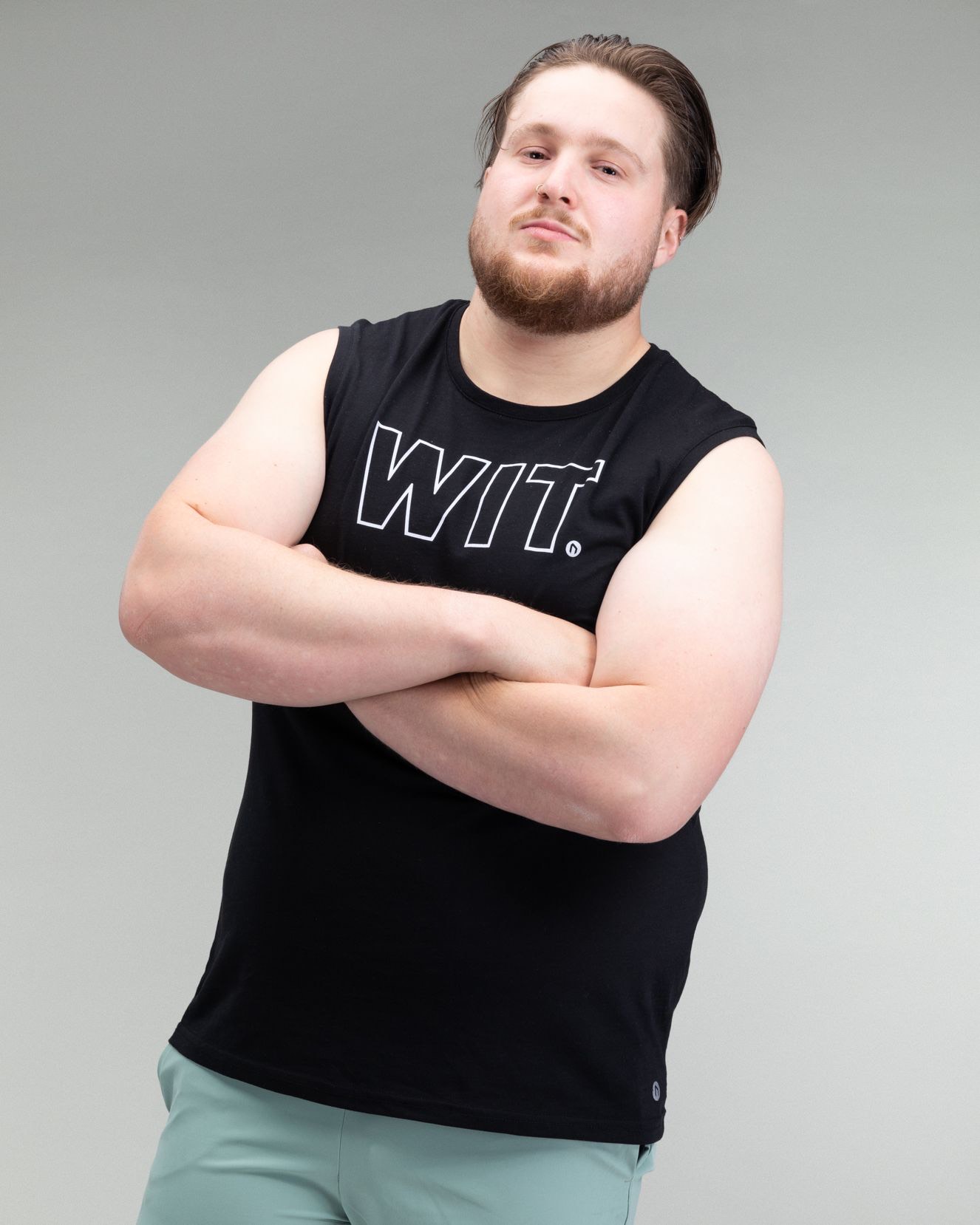
Will Griffiths has eleven years' experience in sports retail, with a focus on footwear. For the past five years he has specialized in training apparel with cross training and CrossFit specialists WIT Fitness, working with most major sportswear brands and other training specialists as the company's retail manager. Through this, he has become an expert on training apparel, footwear, and accessories.
What activities are cross training shoes designed for?
Cross training shoes are designed with the sole purpose of not having a sole purpose. Instead, they’re supposed to be able to turn their hand (or feet) to almost any gym-based activity.
“Cross training shoes are designed for a massive range of activities, they should be able to handle anything from a short run to a max back squat,” says Griffiths. “In essence they're designed for versatility, so (can be worn) if you're doing any form of training or working on your fitness.”
So, who can benefit from investing in this flexible form of footwear? In Griffith’s opinion, it’s more a question of who can’t benefit from picking up a pair. “Everyone that trains in a gym or fitness class should absolutely have a pair of cross training shoes,” he says.
What is the difference between running and cross training shoes?
A running shoe is designed with a specific activity in mind: running. A cross training shoe is created to be versatile.
Running shoes usually have a thick layer of foam cushioning in the midsole to absorb the impact of each stride. On top of this you’ll find a lightweight, breathable mesh upper and plush cushioning around the heel.
But if you wear this sort of shoe in a gym environment, you’ll find the thin upper may be damaged by certain exercises, and the generous layer of foam feels unstable when performing exercises like squats.
That’s why the midsole of a cross training shoe tends to be thinner and provide a lower heel-to-toe offset than the midsole of a running shoe; this improves ground-feel and stability, providing firm foundations for lifting weights.
Cross training shoes may also have added stability and longevity features in the upper. For example, raised rubber guards around the midfoot protect the shoe during exercises like rope climbs and provide support during lateral movements, while a wider forefoot allows you to spread your toes for greater balance.
How often should you buy new cross training shoes?
This is a hard question to respond to without knowing a bit of background information first. For example, the answer will largely depend on the number of times the wearer is training each week, as well as the intensity and nature of their workouts.
However, as a ball-park figure, Griffiths estimates most people can expect between one and two years of solid use out of a quality pair of cross training shoes. Although, he adds, “a new color or style will likely take your fancy before you actually need to replace your shoes.”
Are cross training shoes good for walking?
You can wear cross training shoes for walking, I know I do, tumbling straight from the gym into my morning dog walk most days.
I’ve found the R.A.D One is my favorite for wearing out and about—partly because it’s so comfortable, and partly because it looks great—while the Reebok Nano X3 Adventure’s robust design makes it a great fit for muddier jaunts.
The thin layer of cushioning and snug fit of cross training shoes should keep you comfortable through short walks. But if you want some sneakers to wear for lengthier excursions, hikes or off-trail adventures, it may be worth taking a look at the options in our roundup of the best walking shoes.
Start your week with achievable workout ideas, health tips and wellbeing advice in your inbox.

Jennifer Rizzuto is a freelance fitness journalist based in New York, NY. She’s been a NASM-certified personal trainer, corrective exercise specialist, and performance enhancement specialist for over a decade. She holds additional certifications in nutrition coaching from Precision Nutrition, and pre/post-natal exercise from the American Council on Exercise. As the daughter of a collegiate football coach who was never any good at sports, she understands how intimidating it can be to start an exercise regimen. That’s why she’s committed to making fitness accessible to everyone—no matter their experience level.
- Harry BullmoreFitness Writer